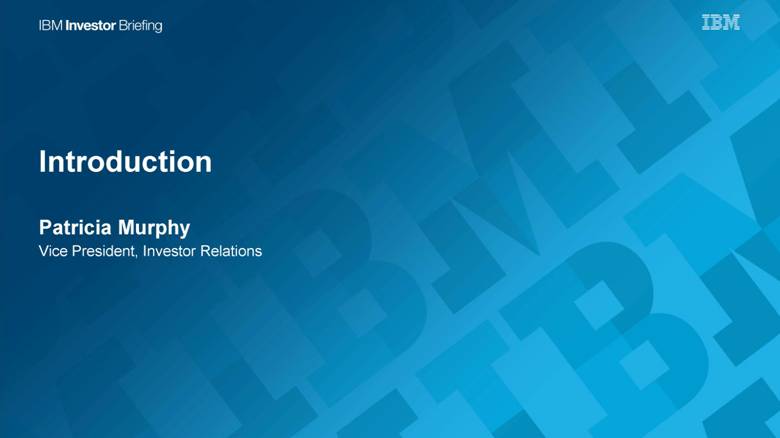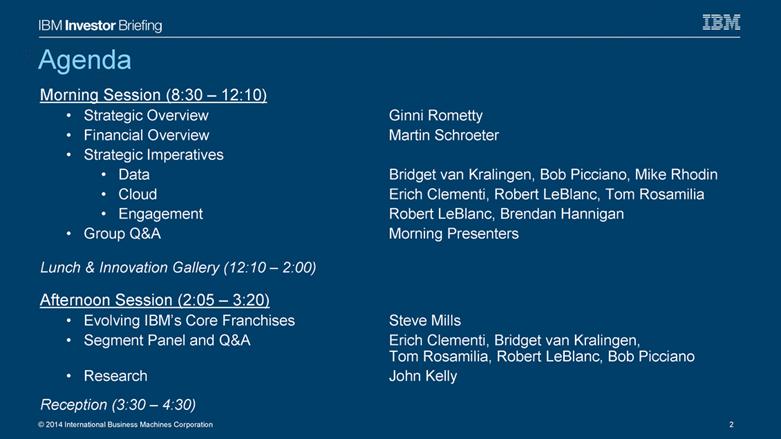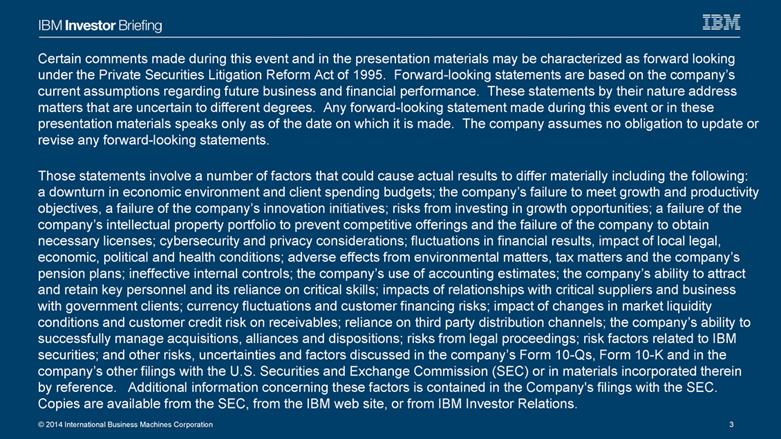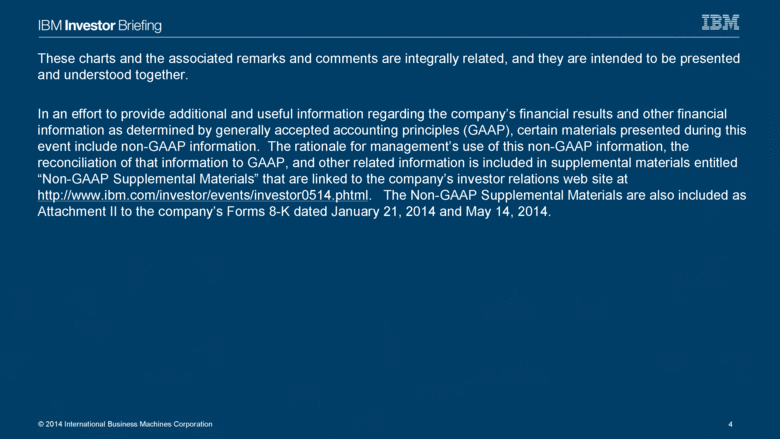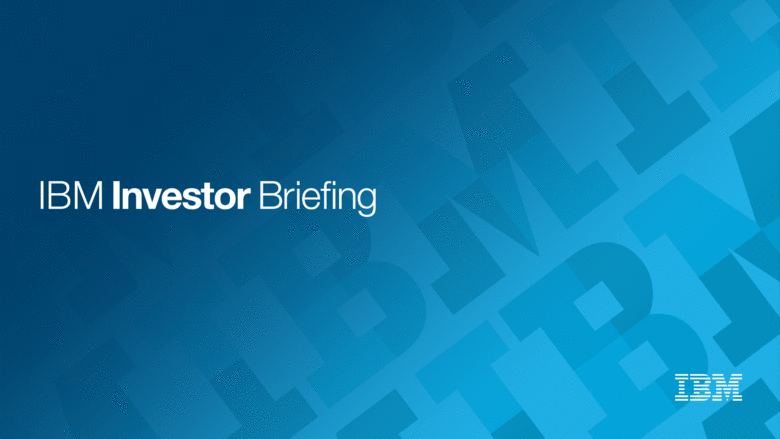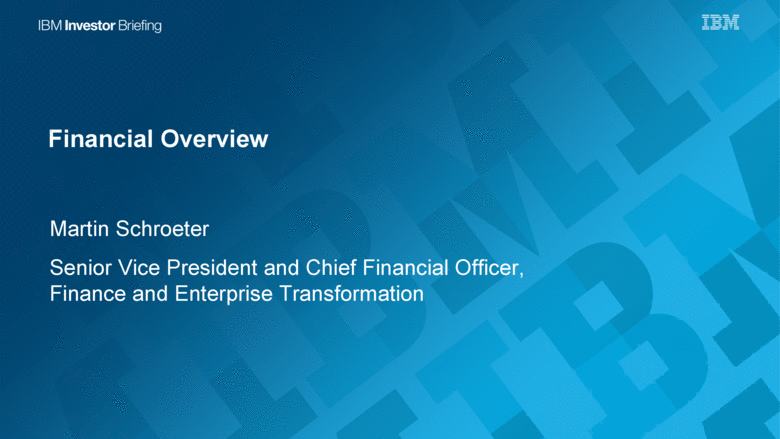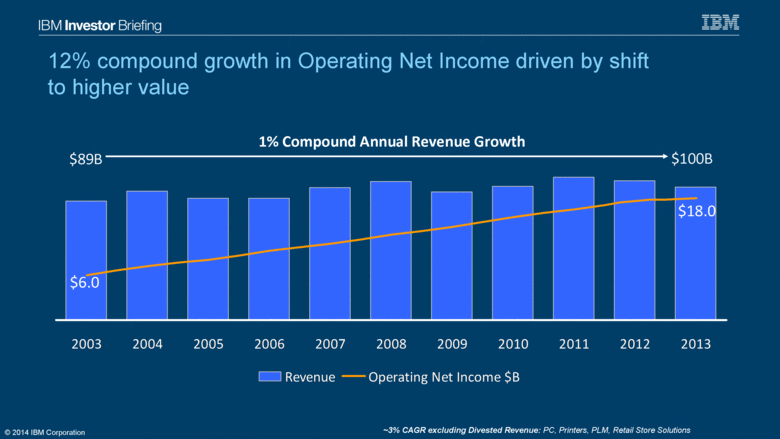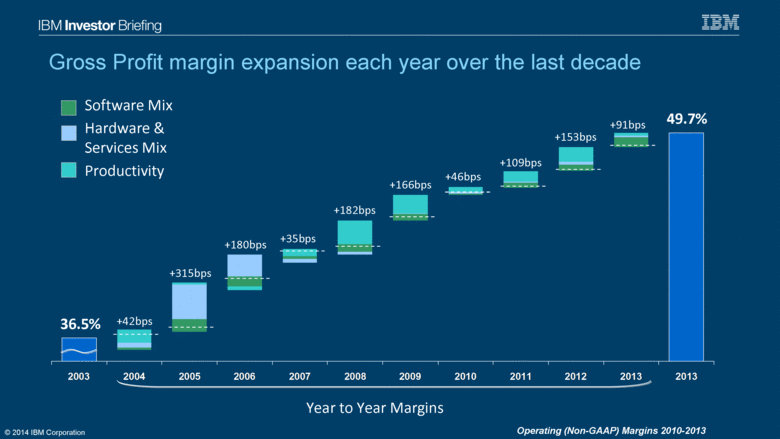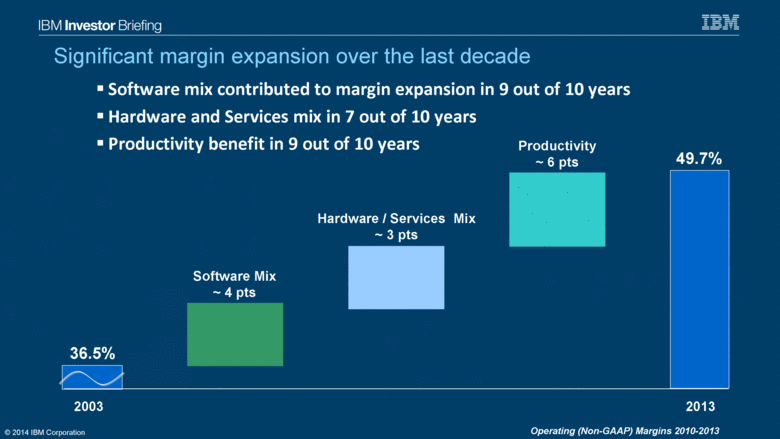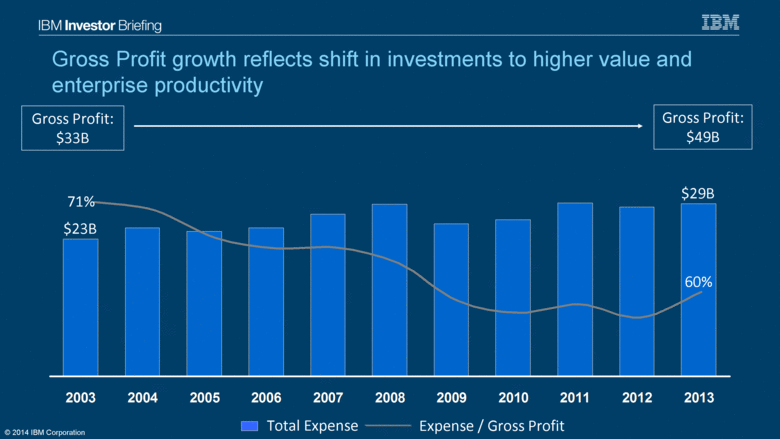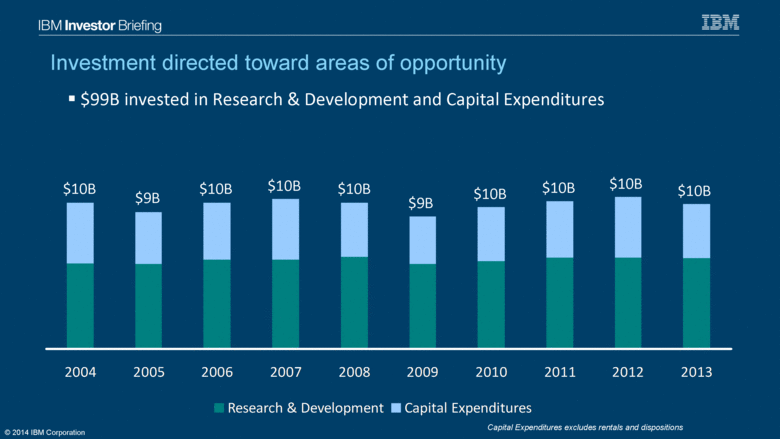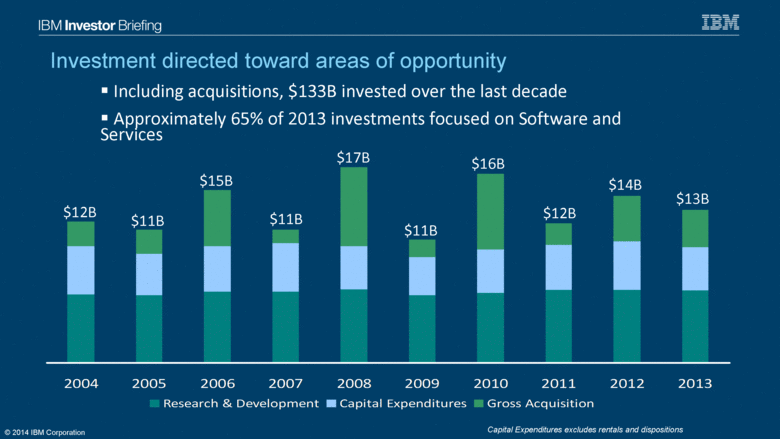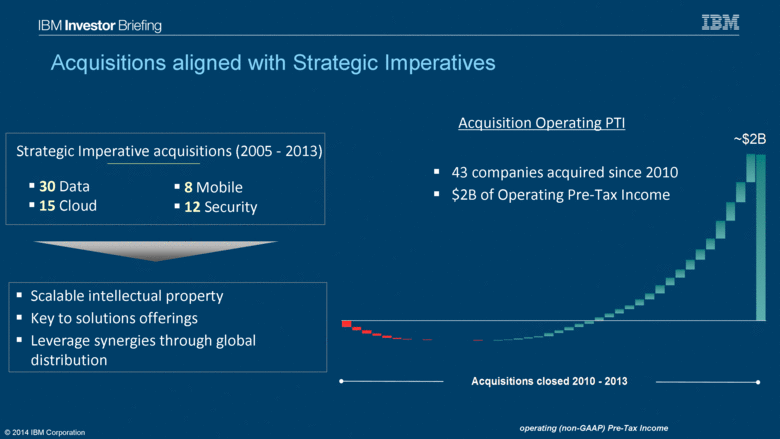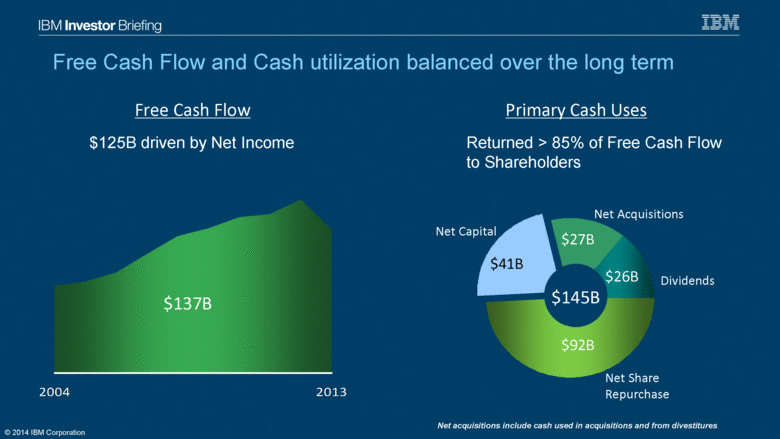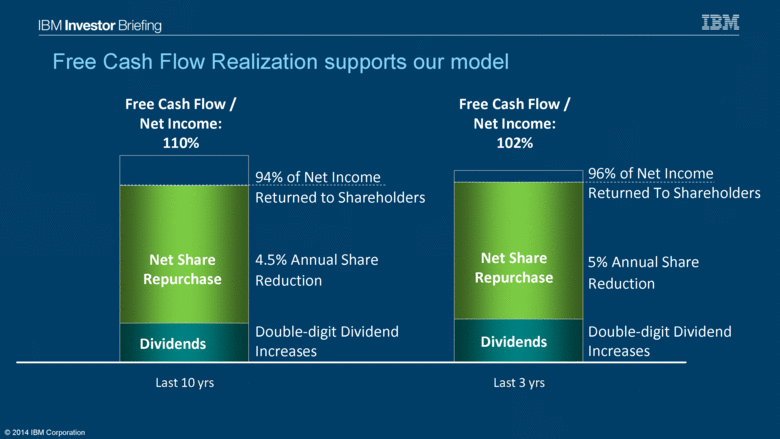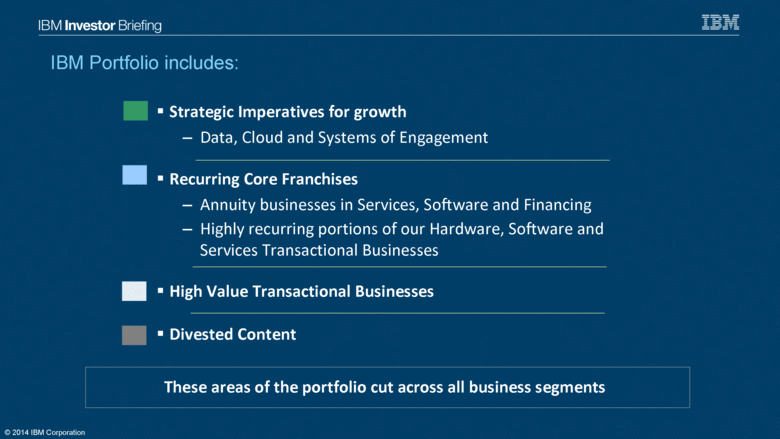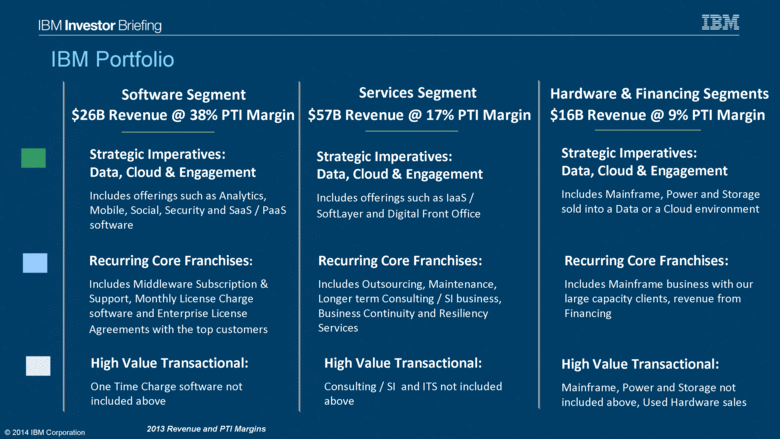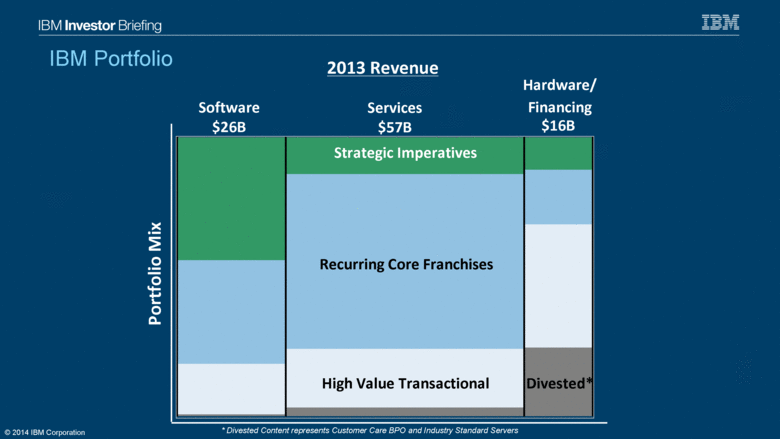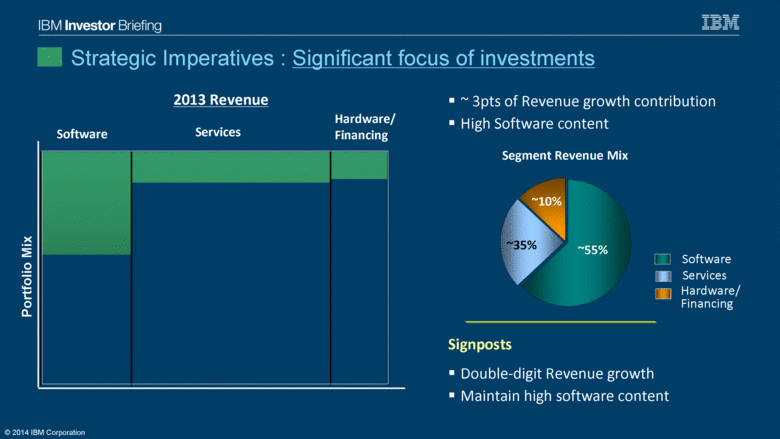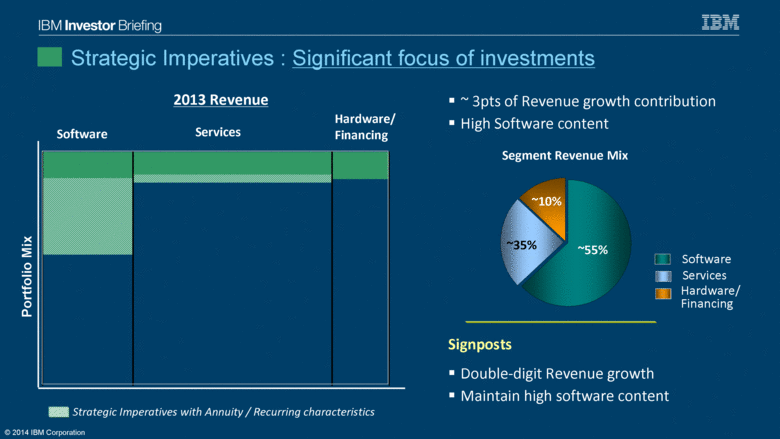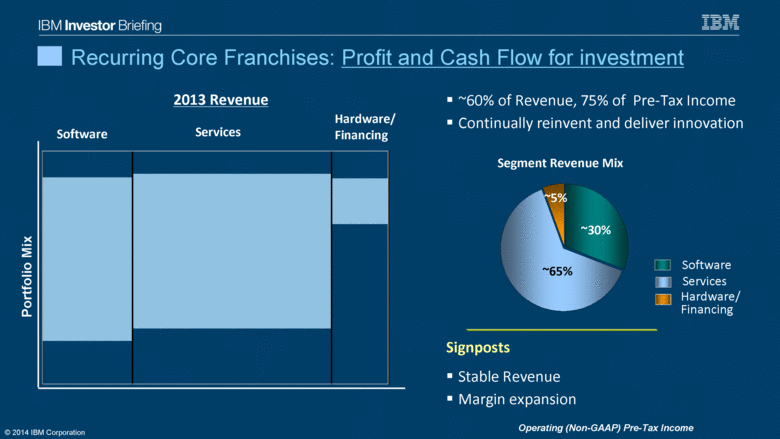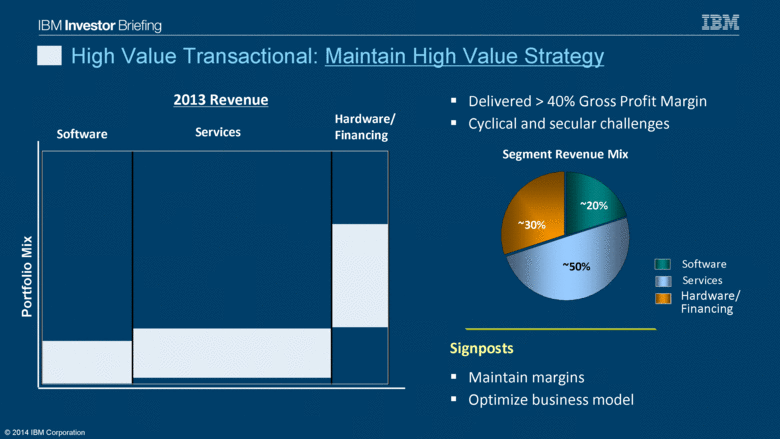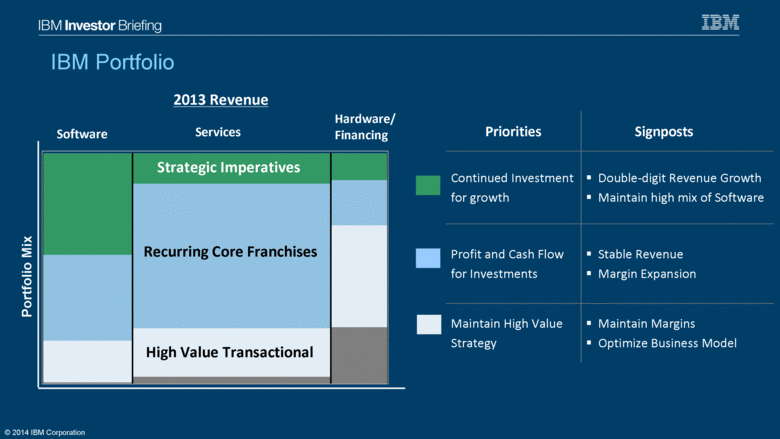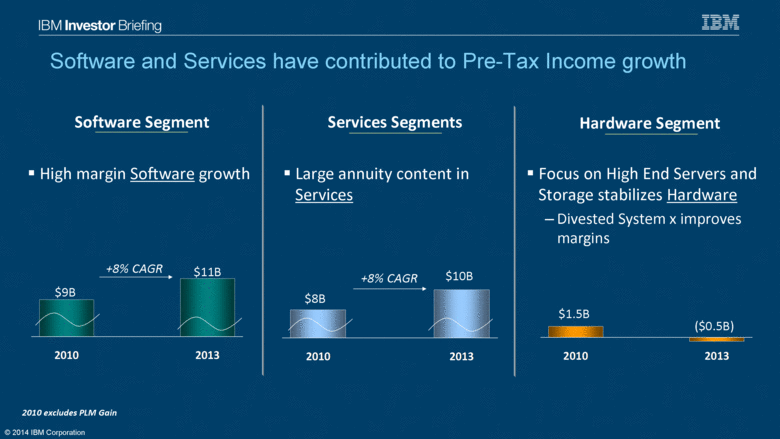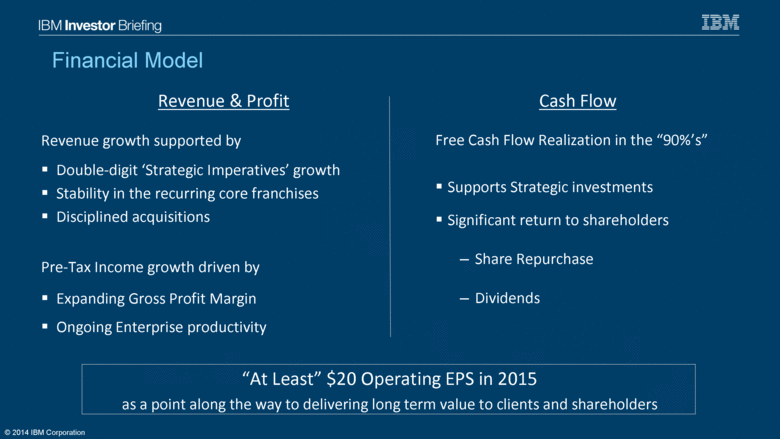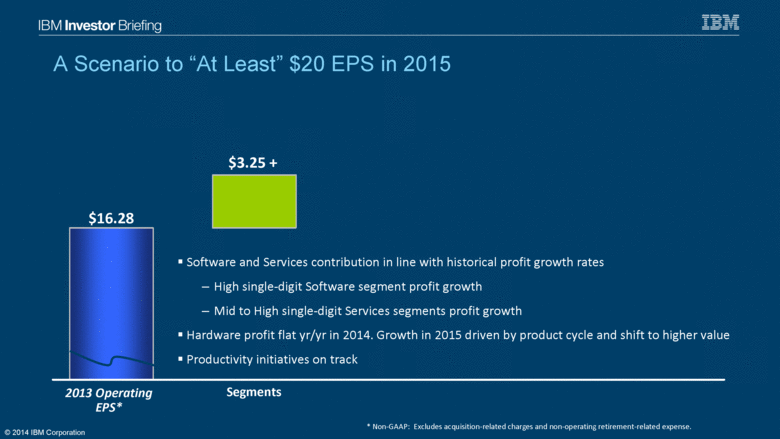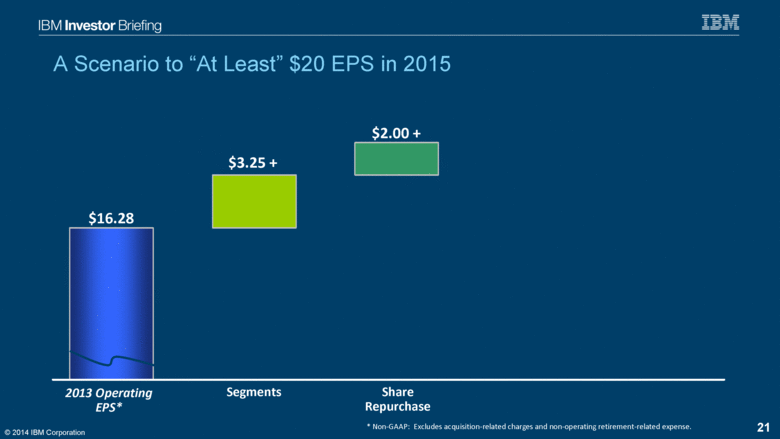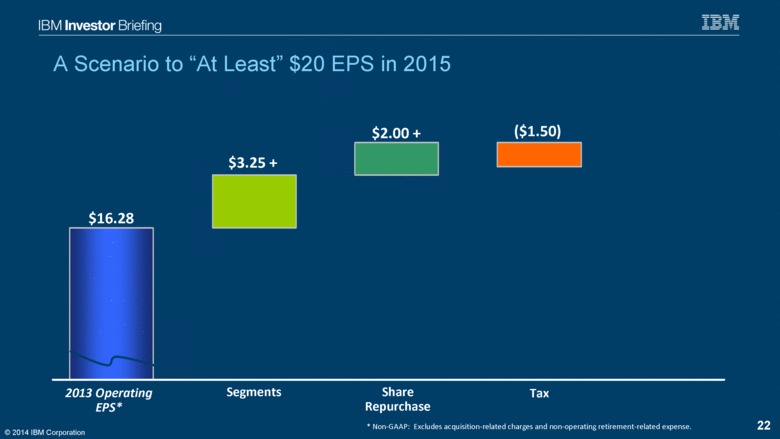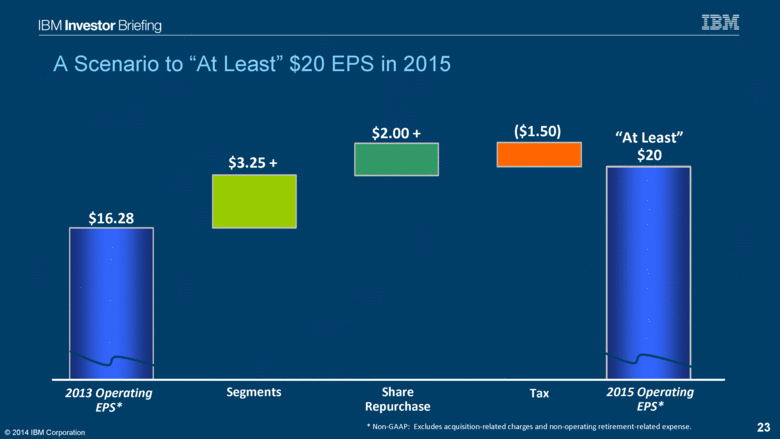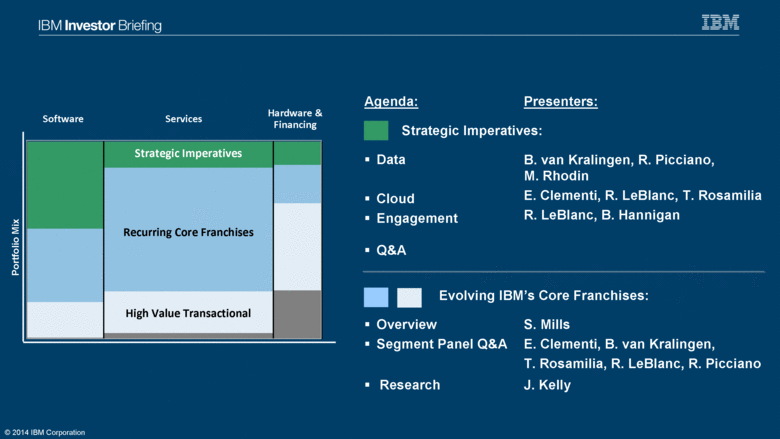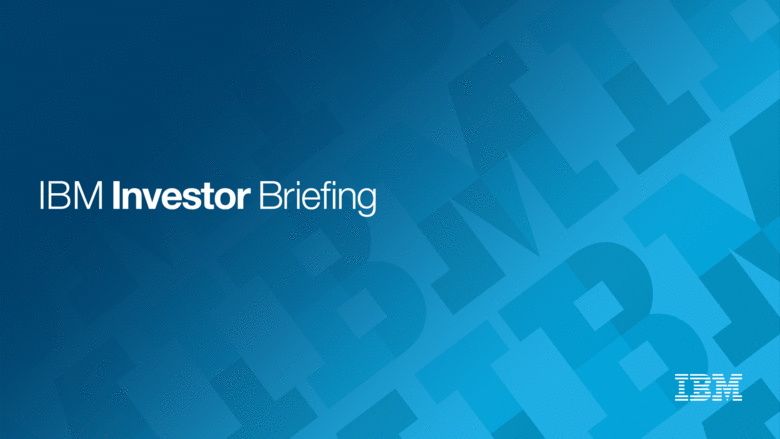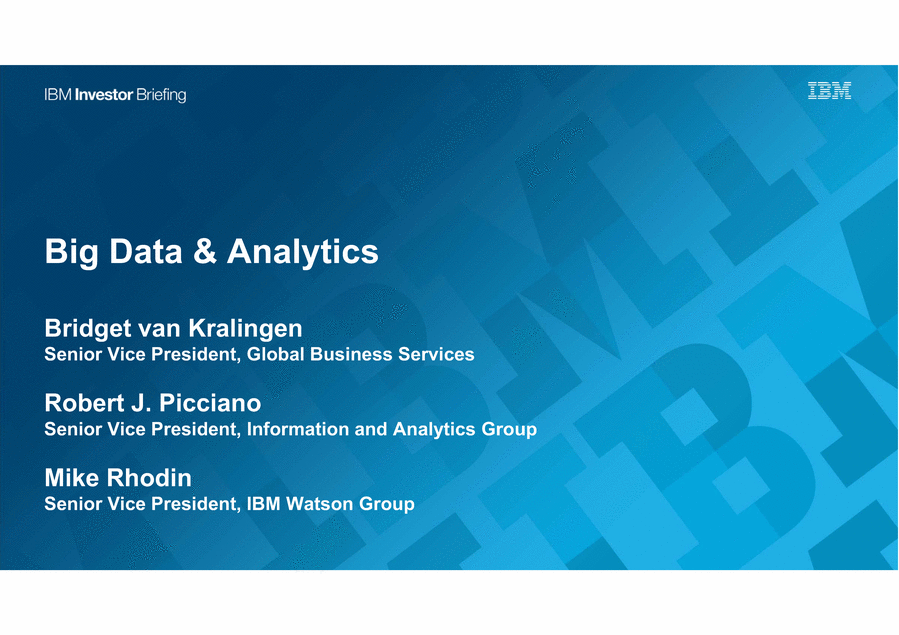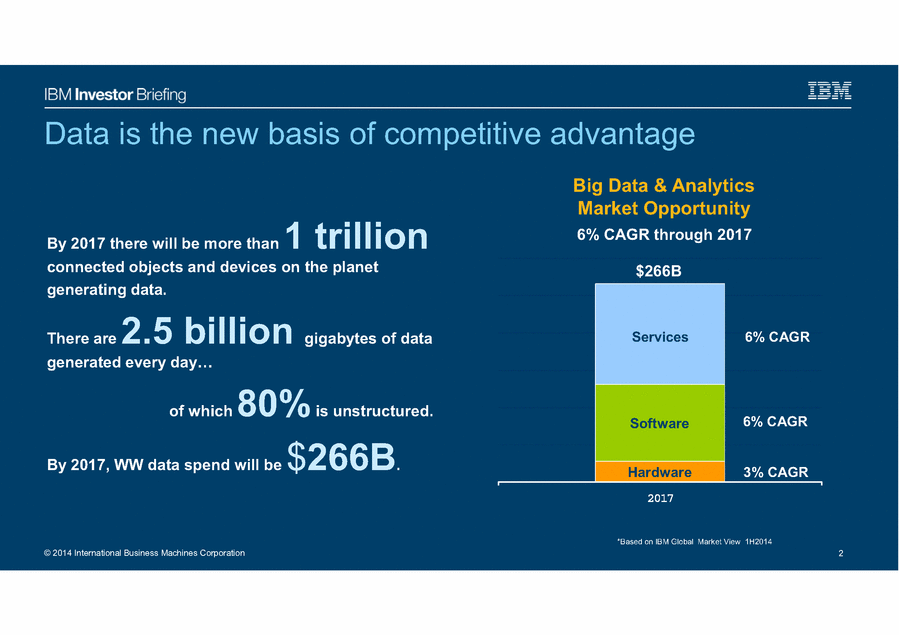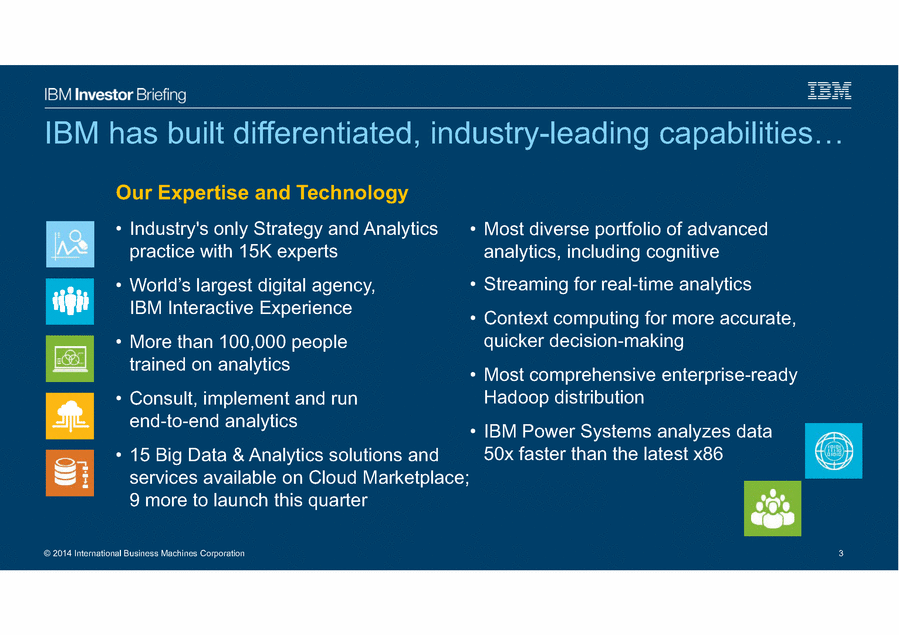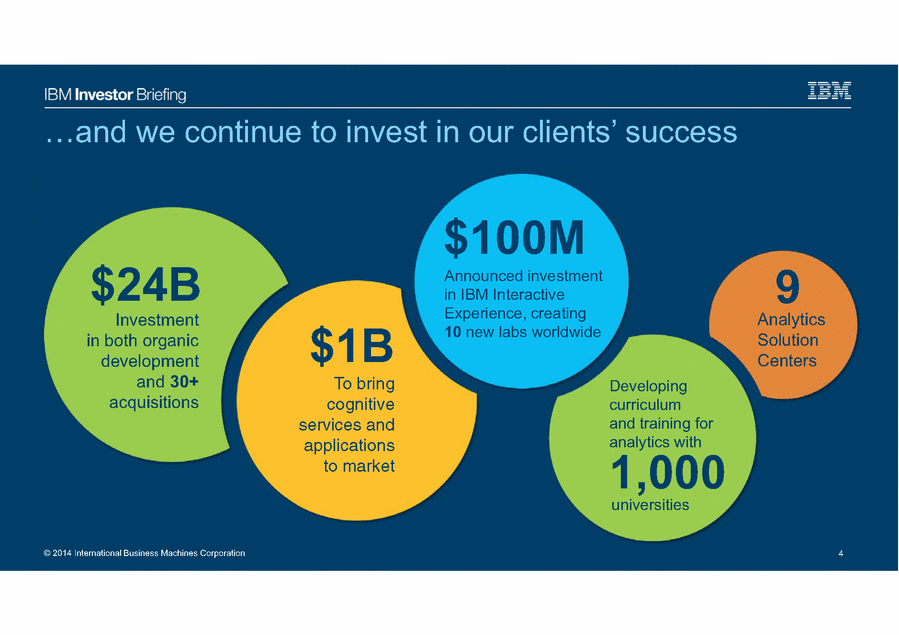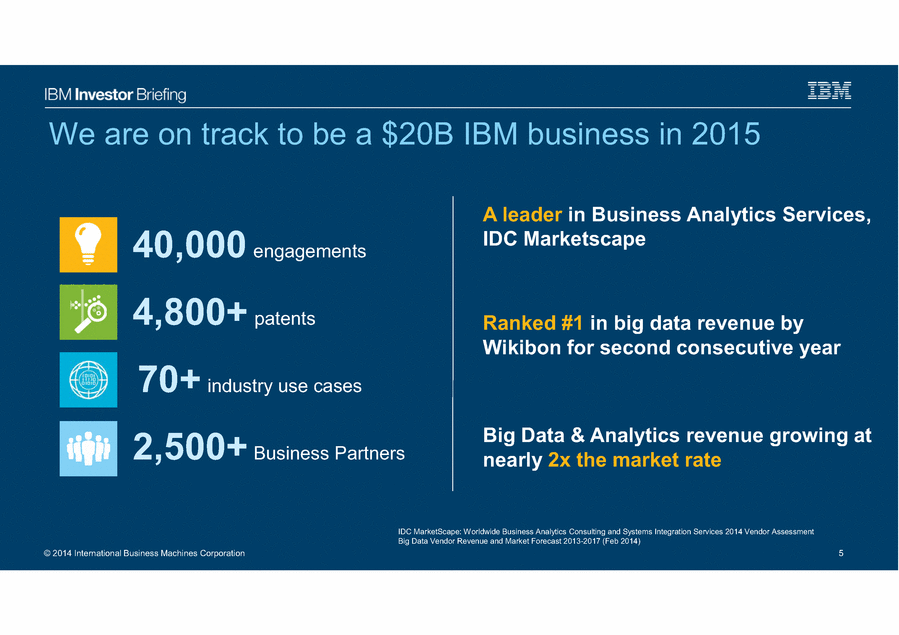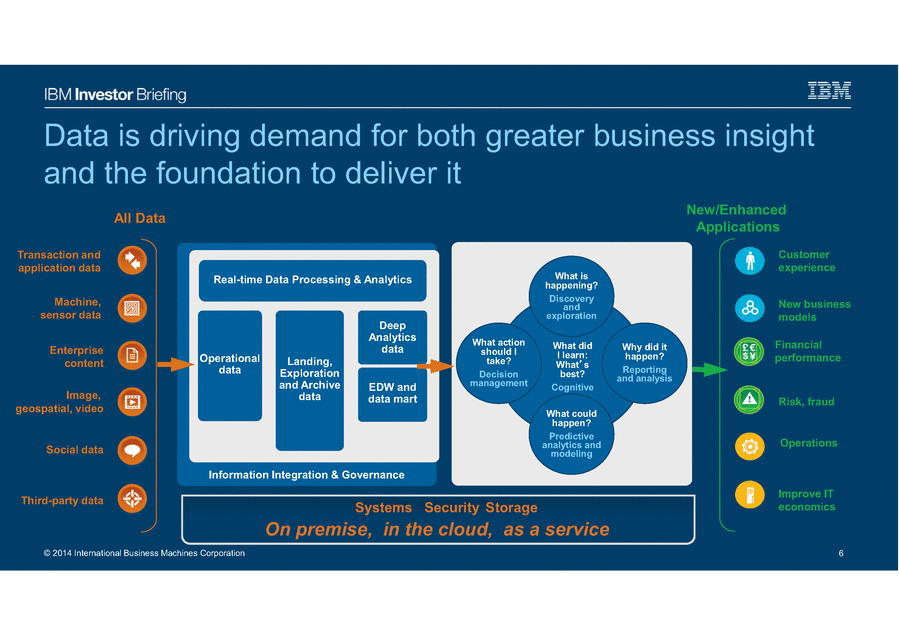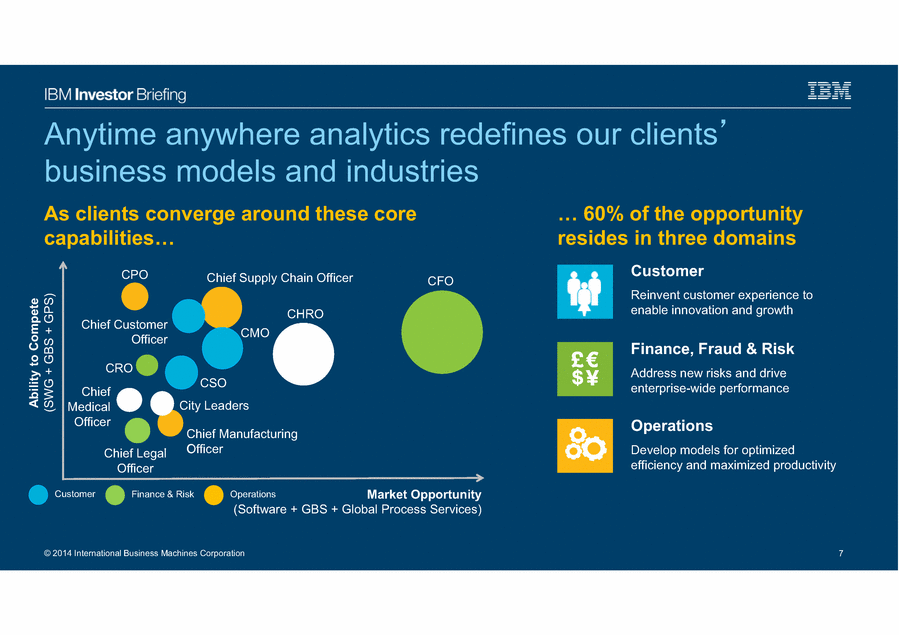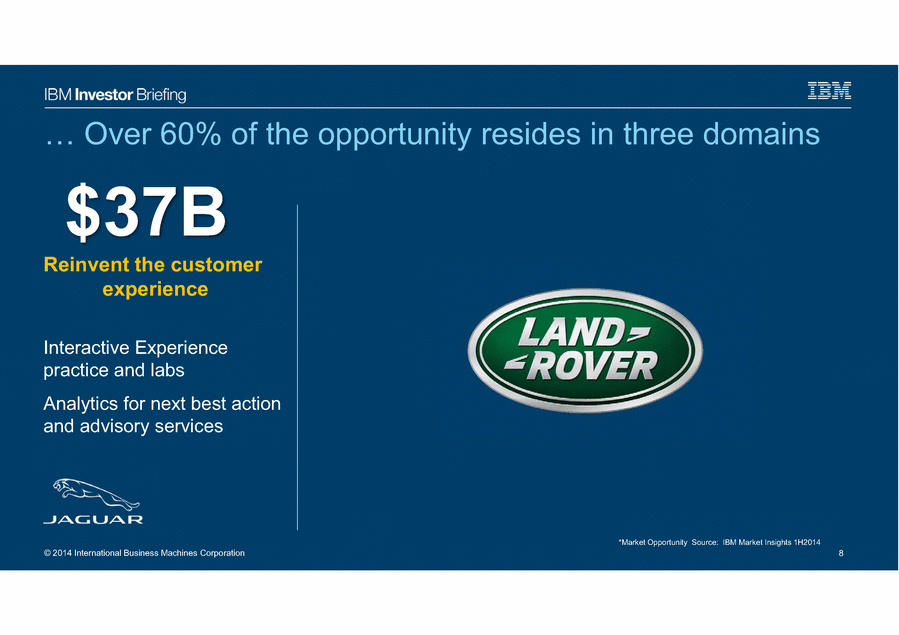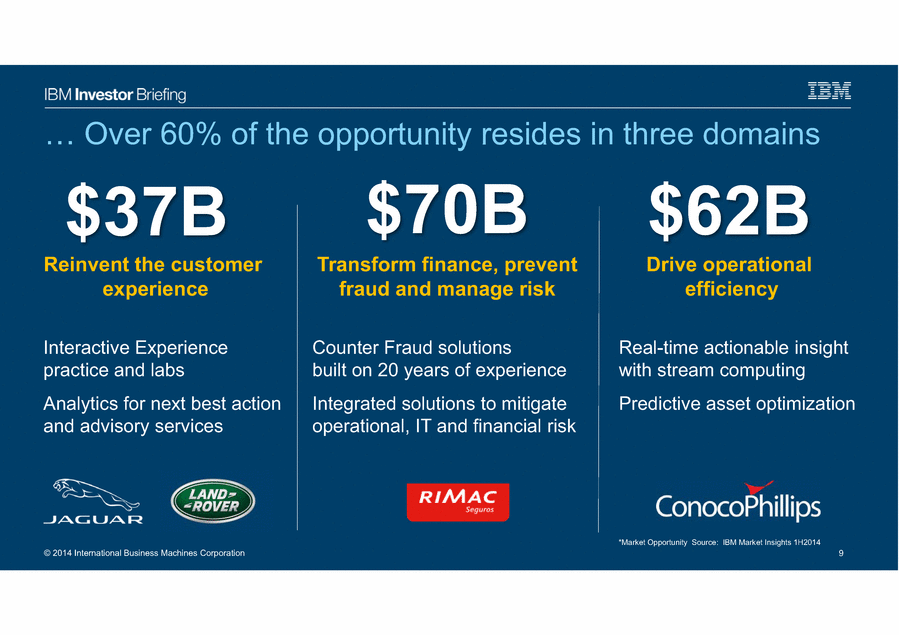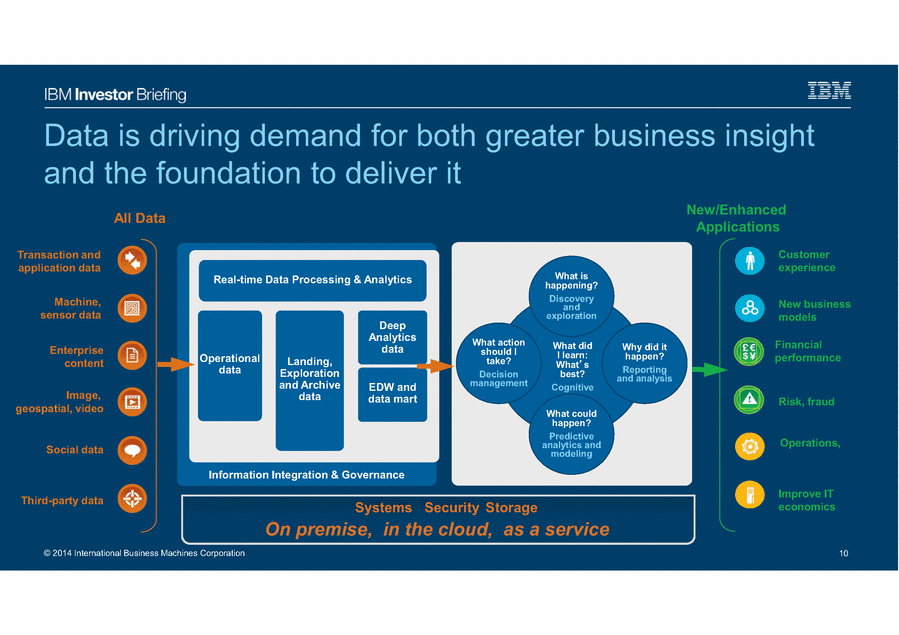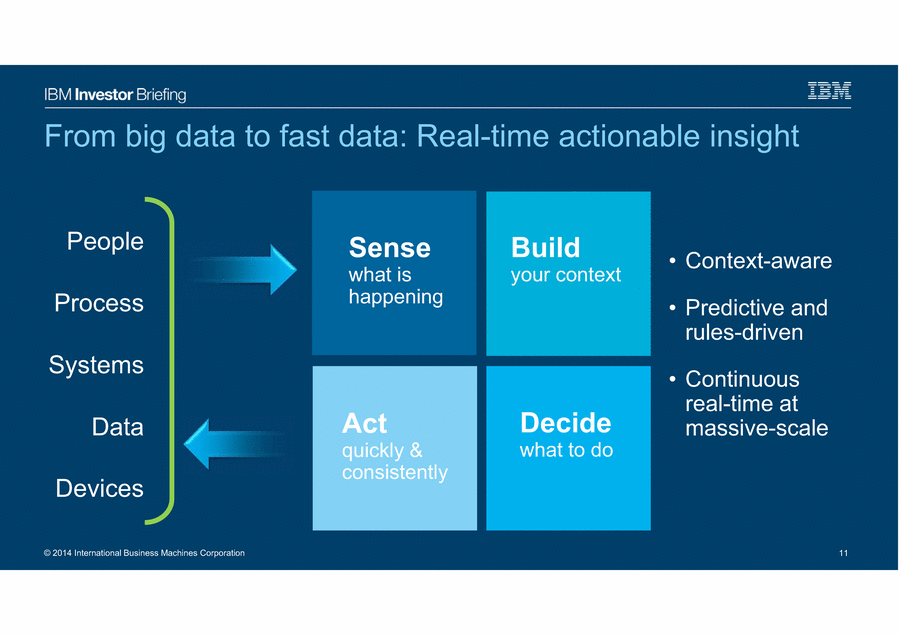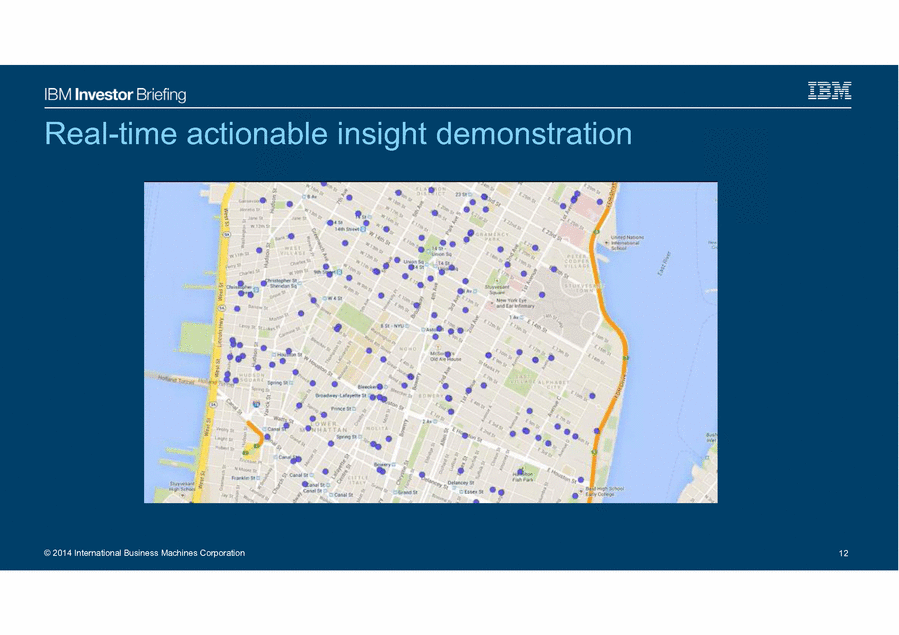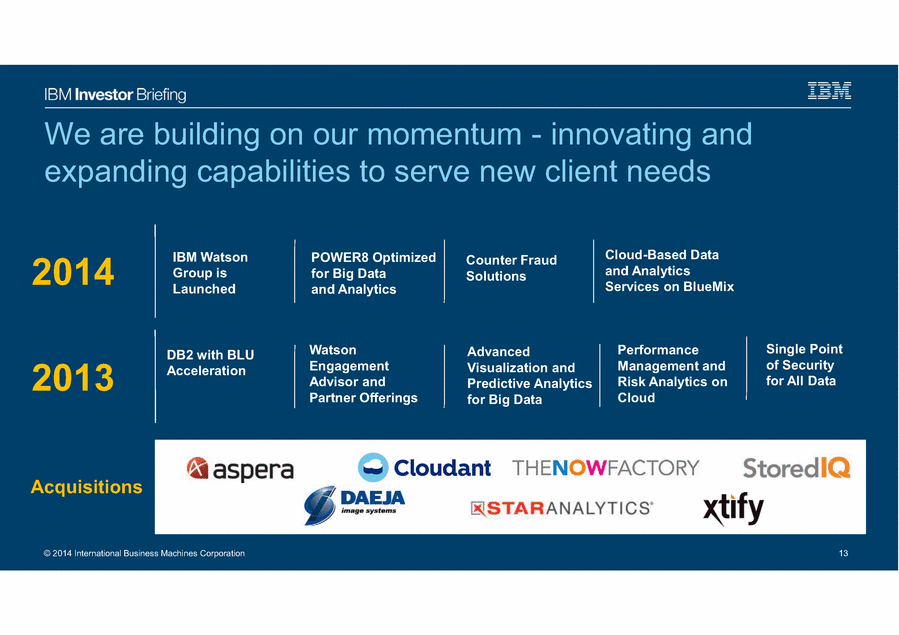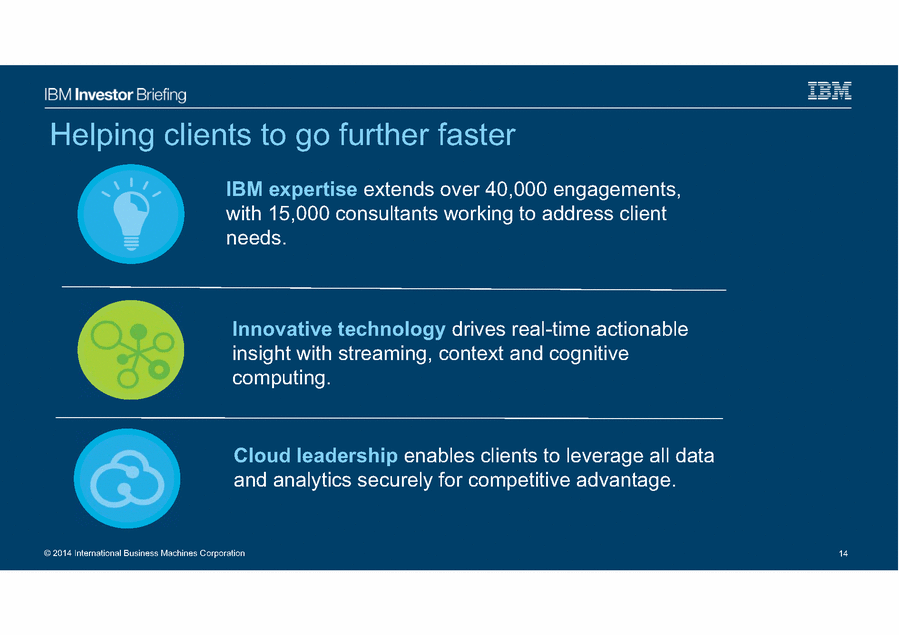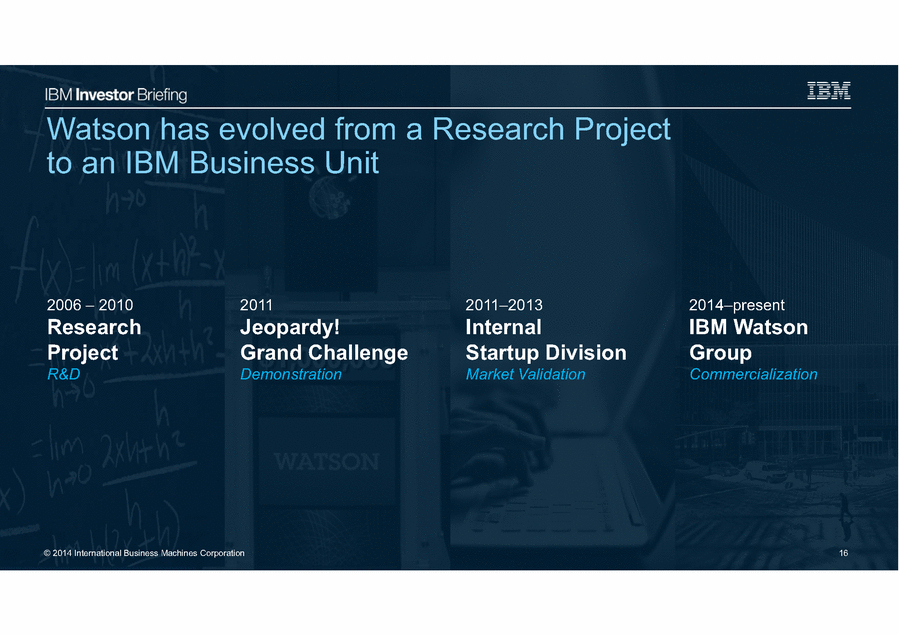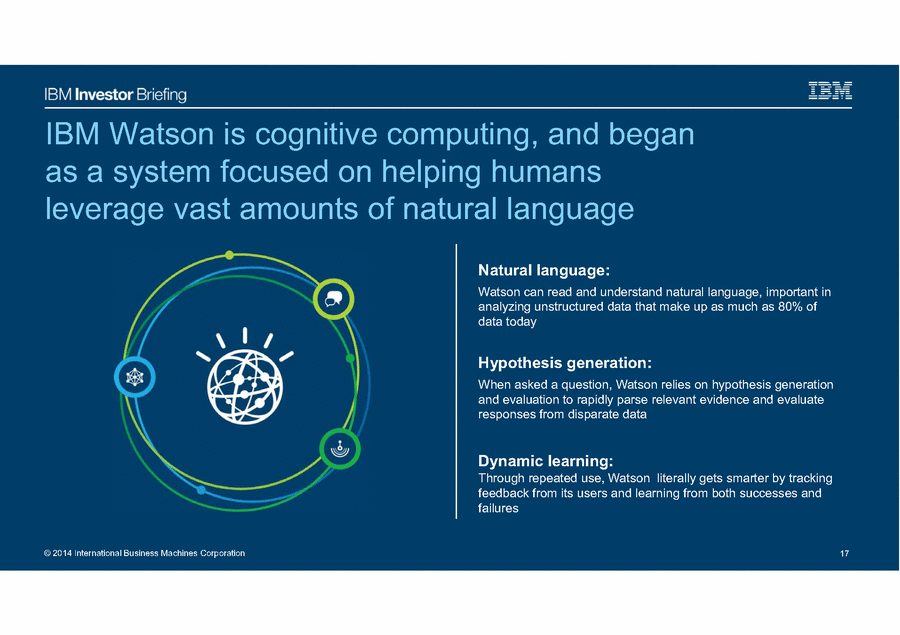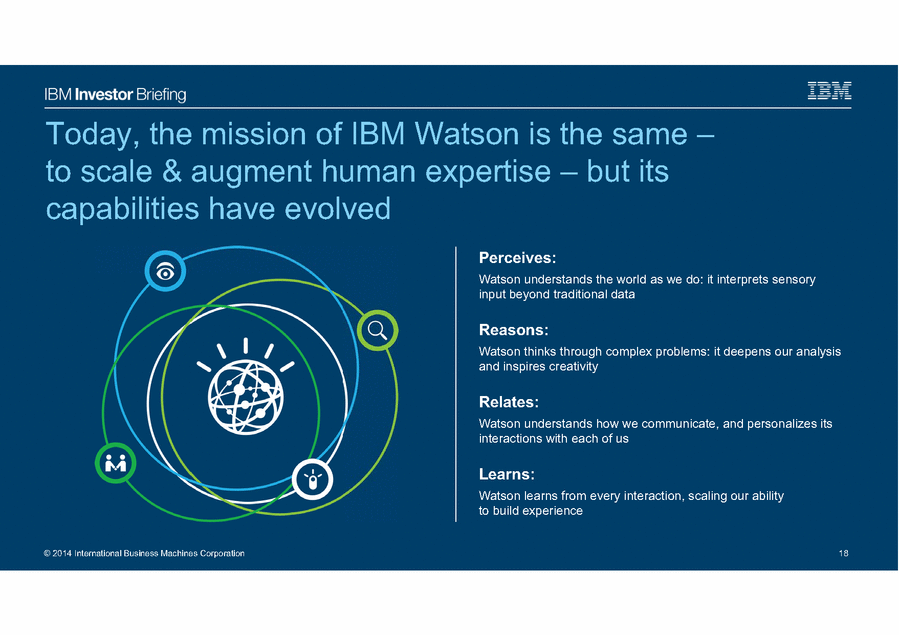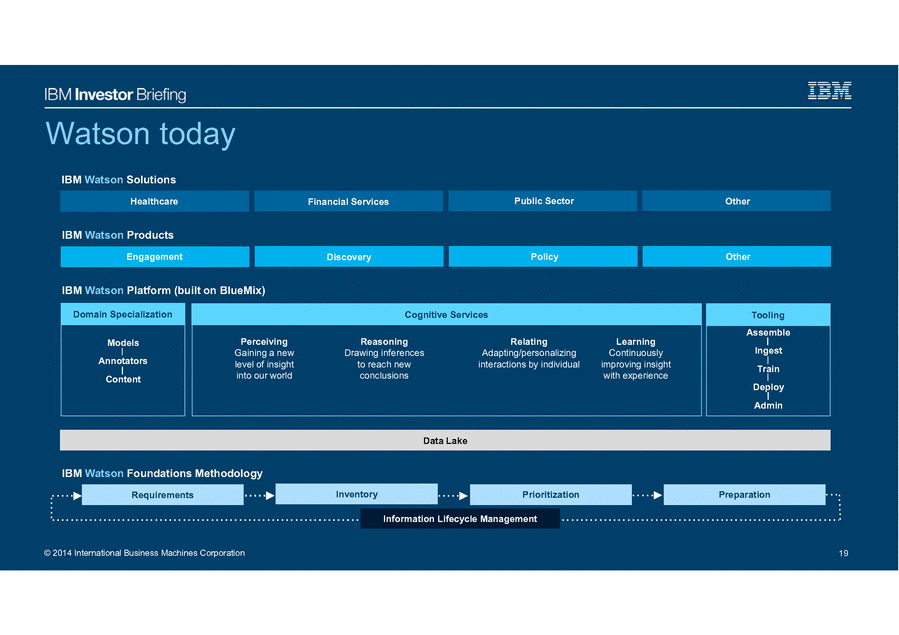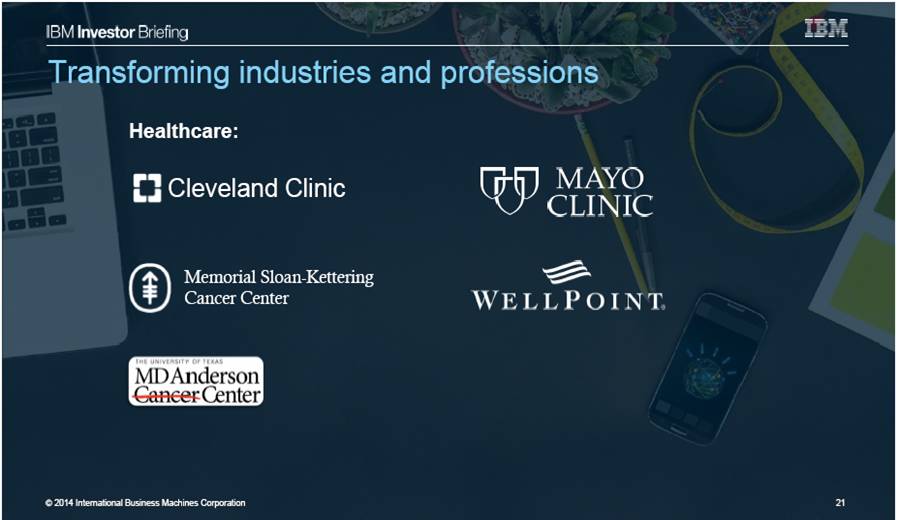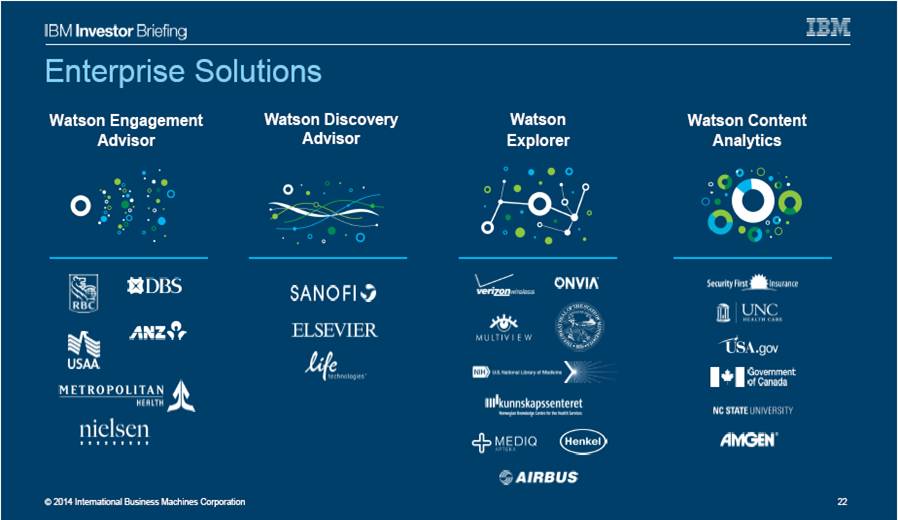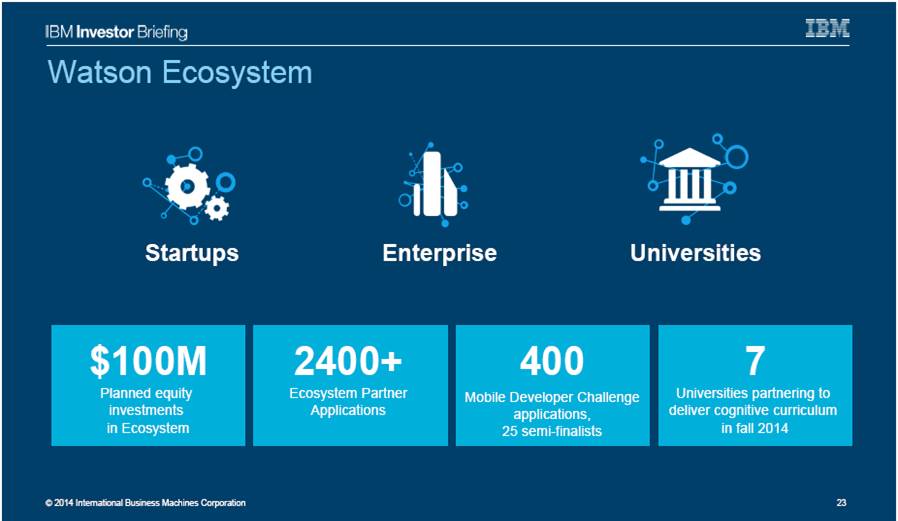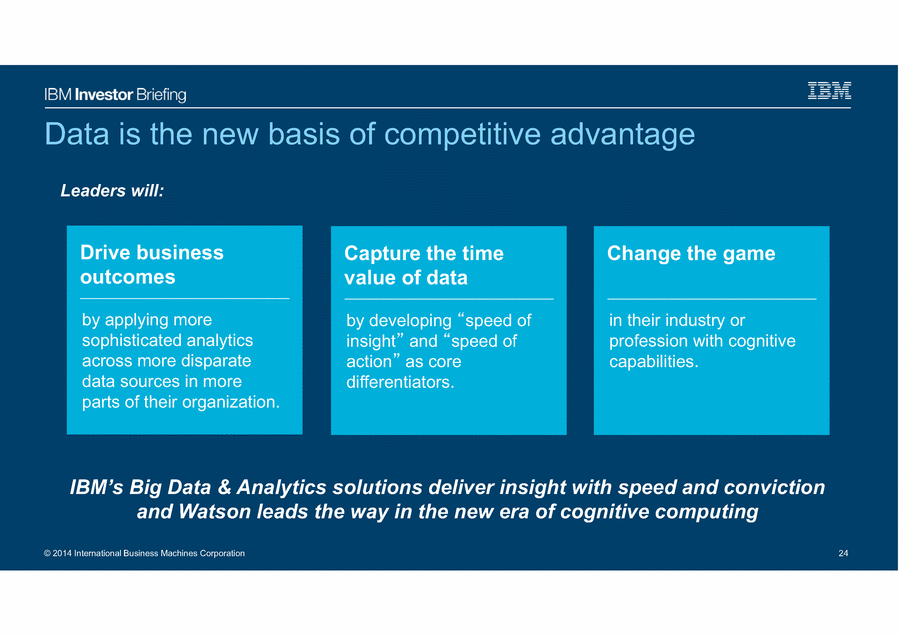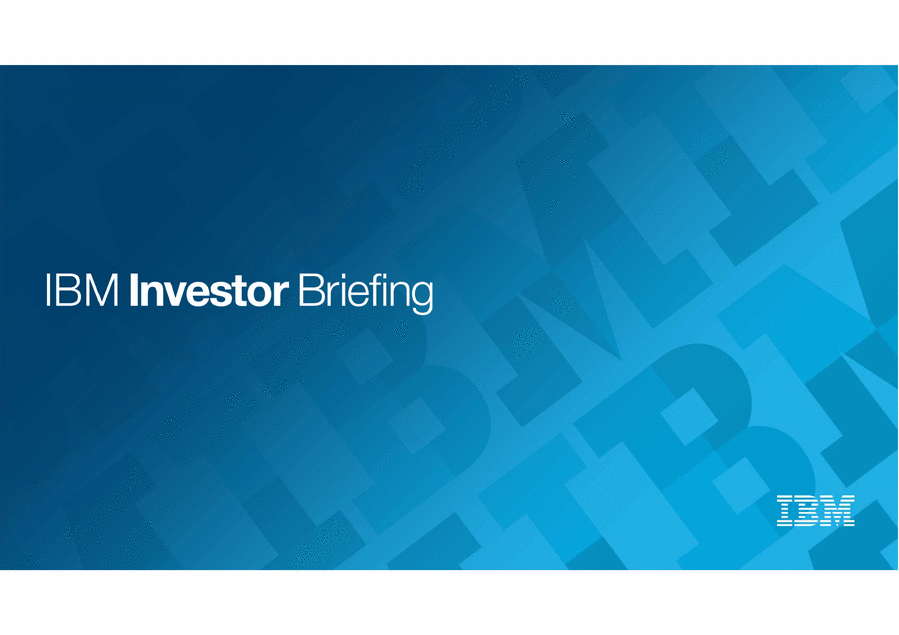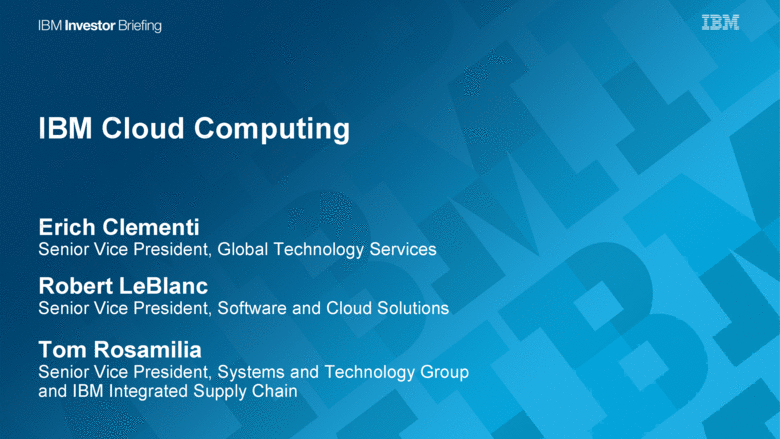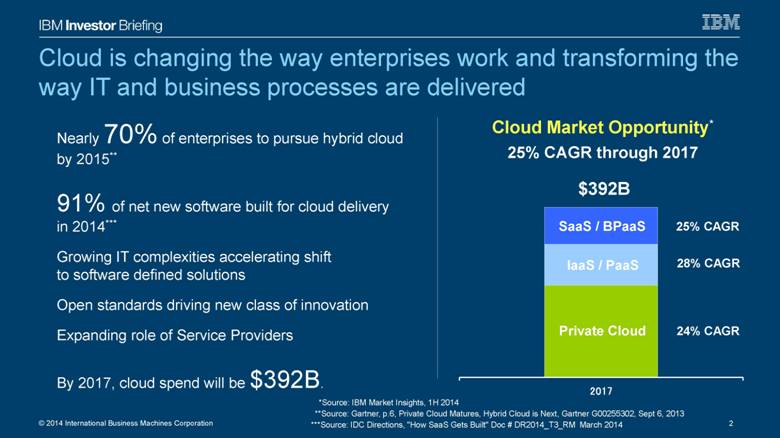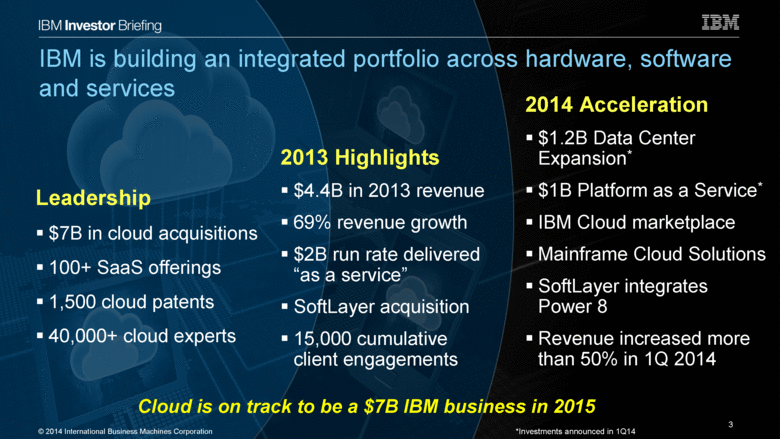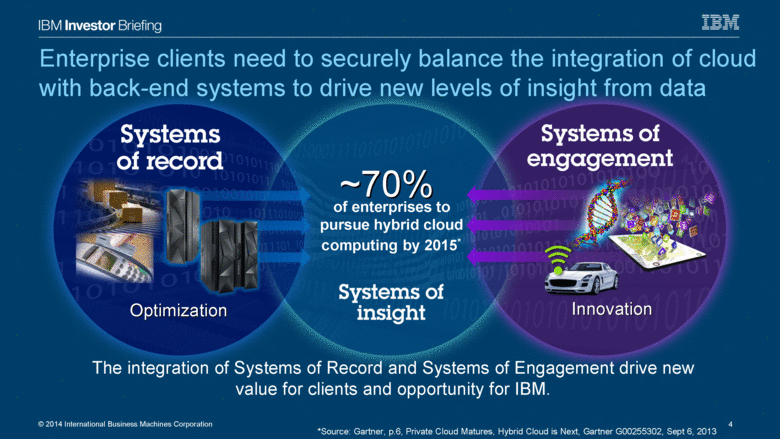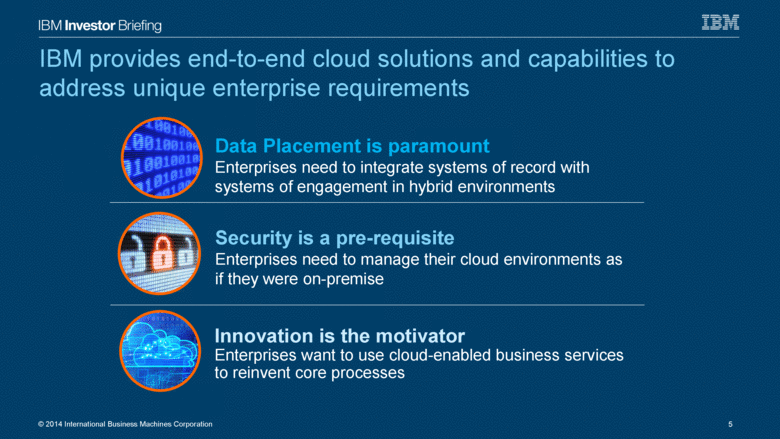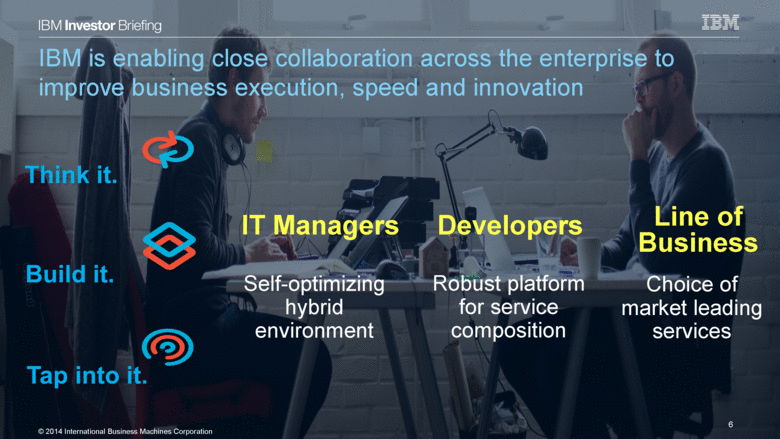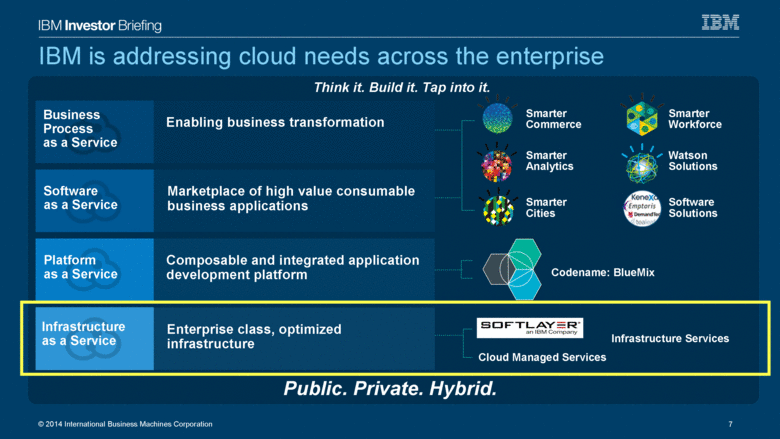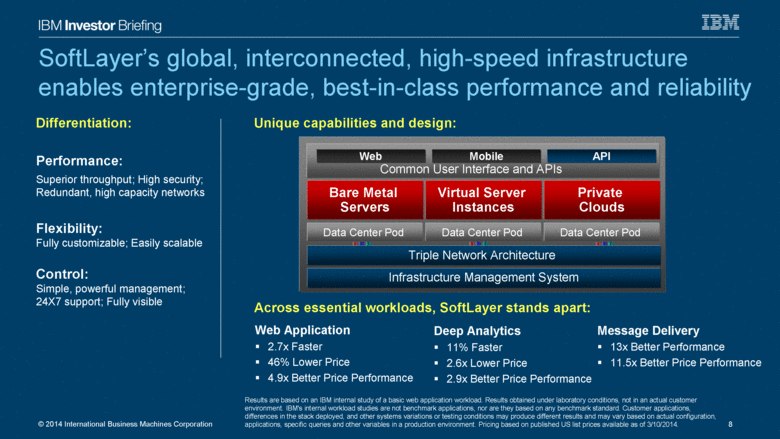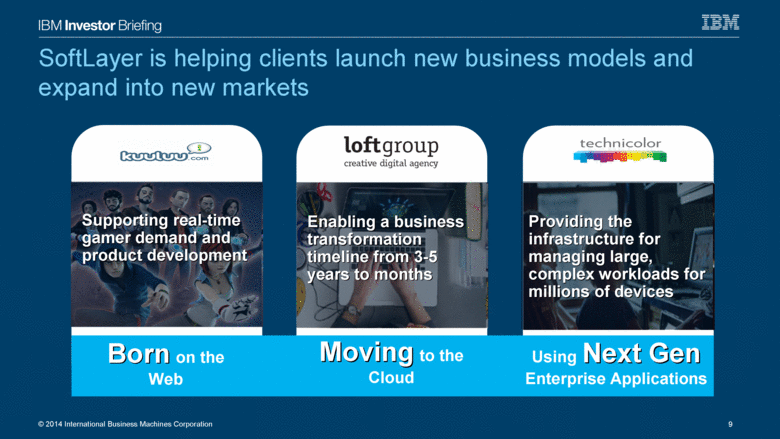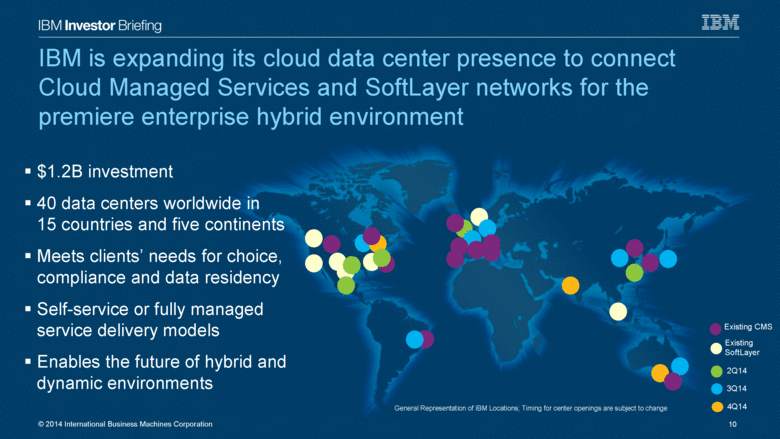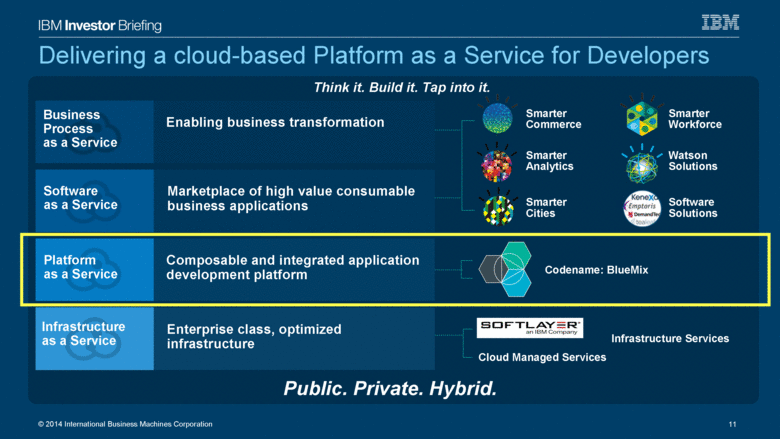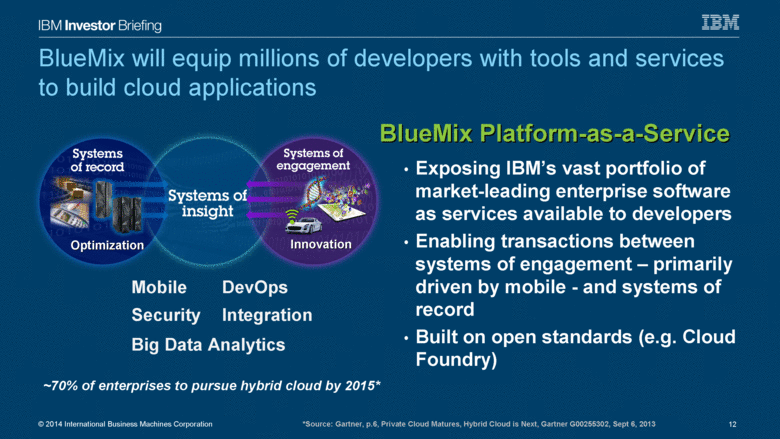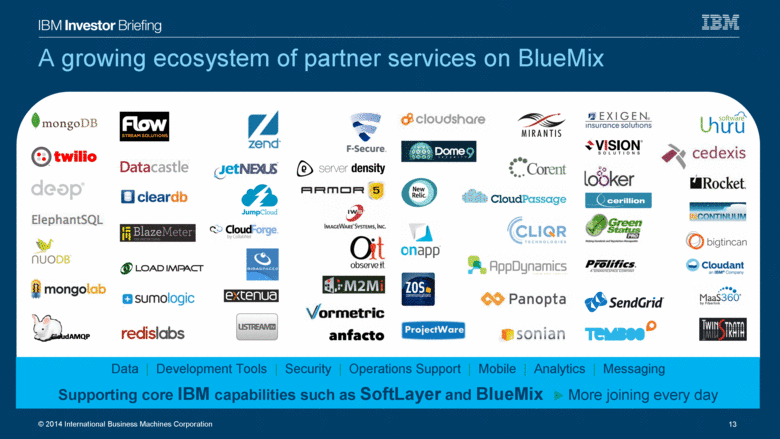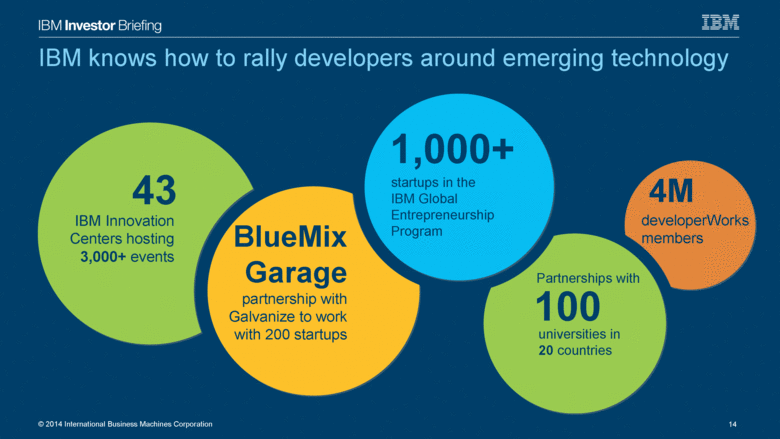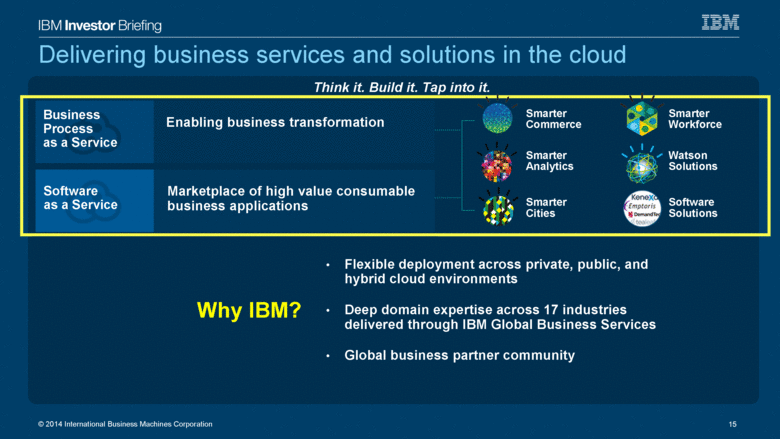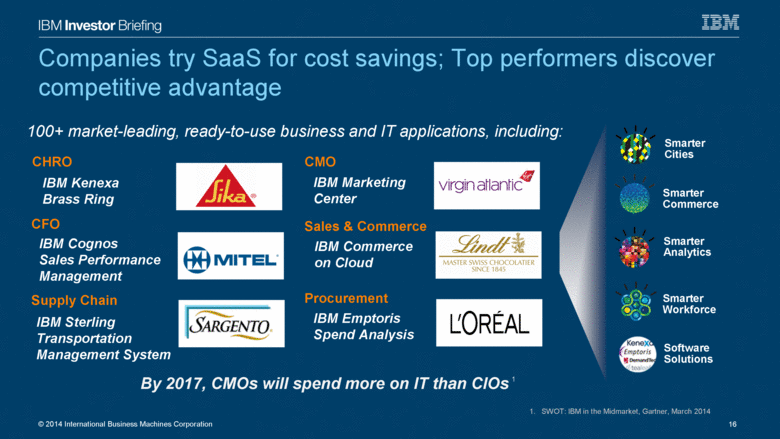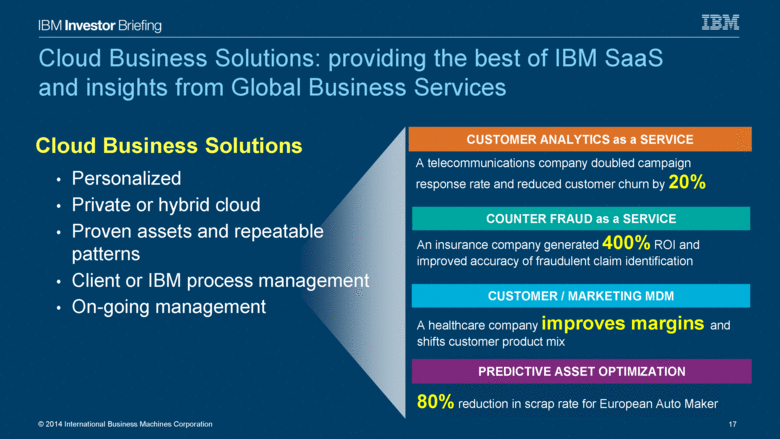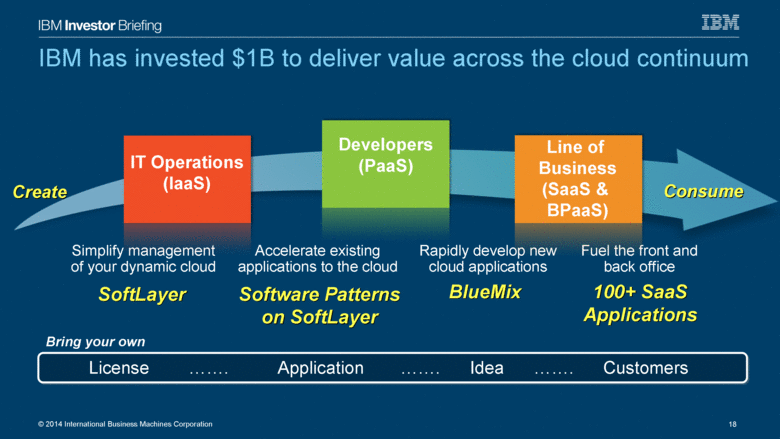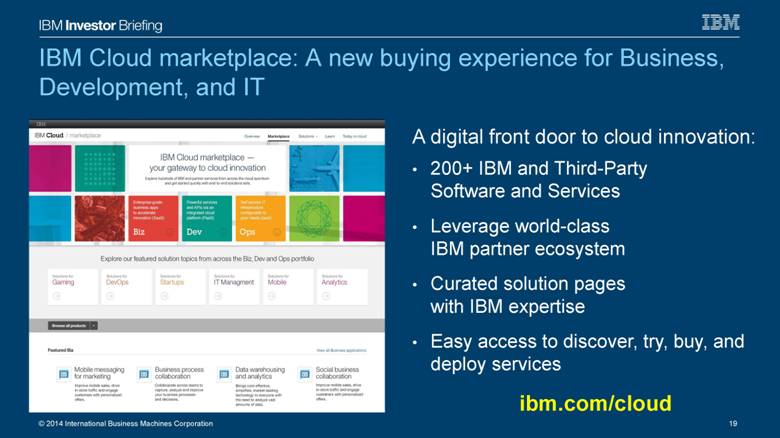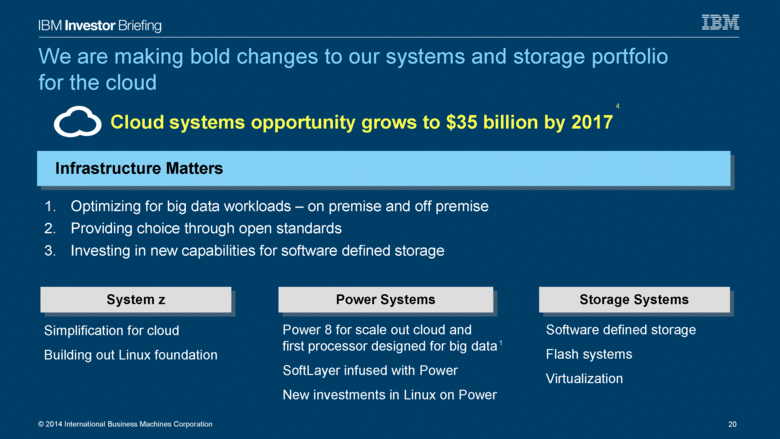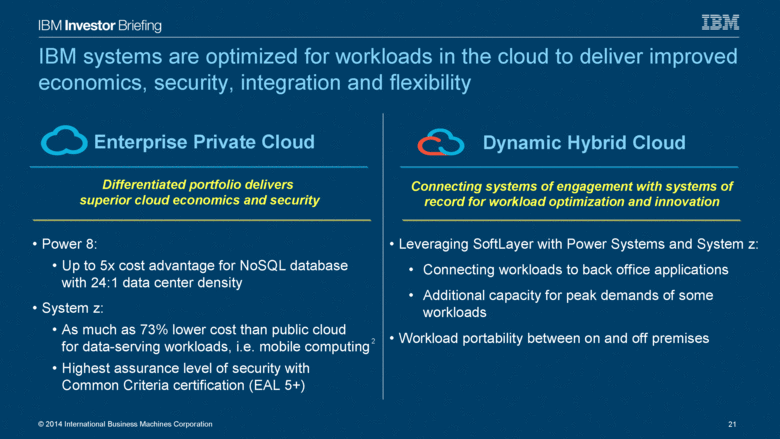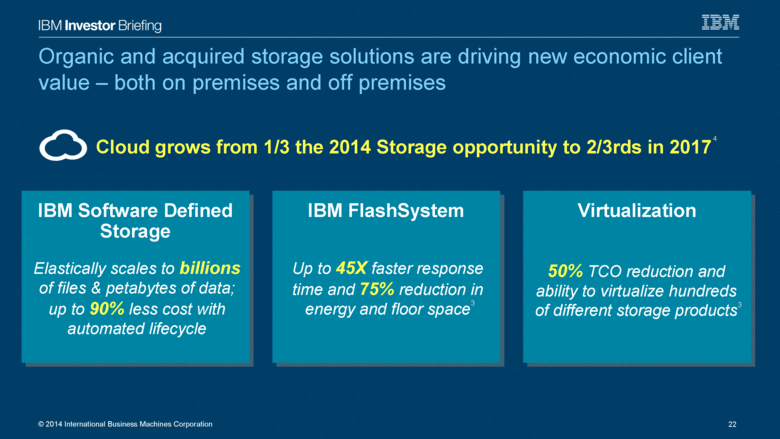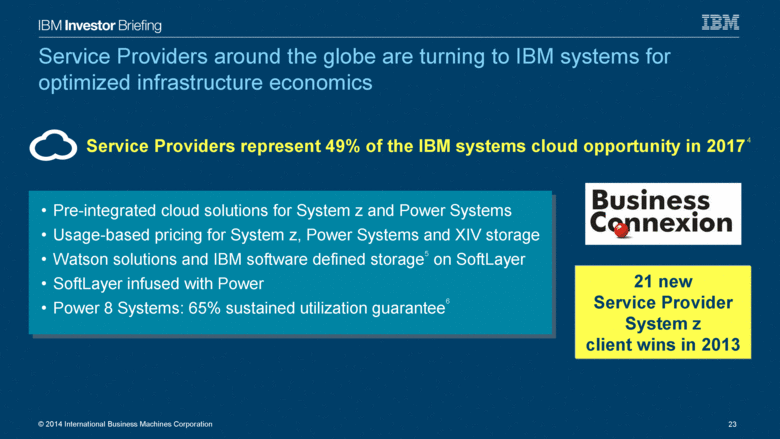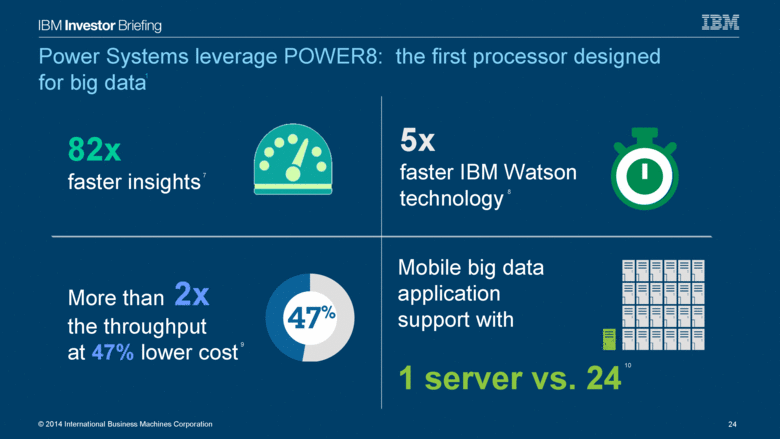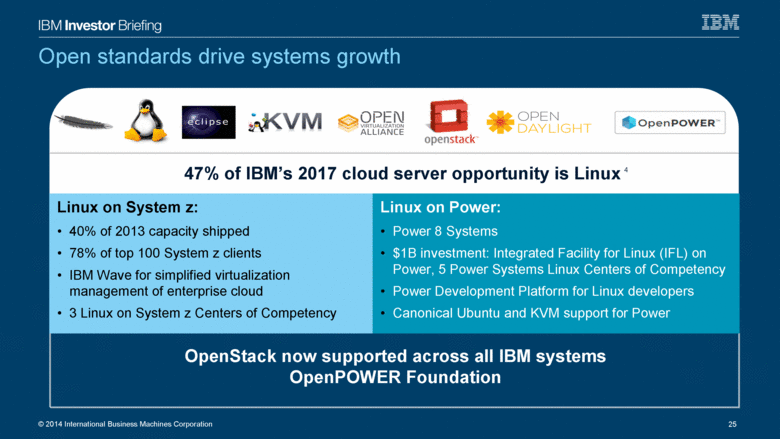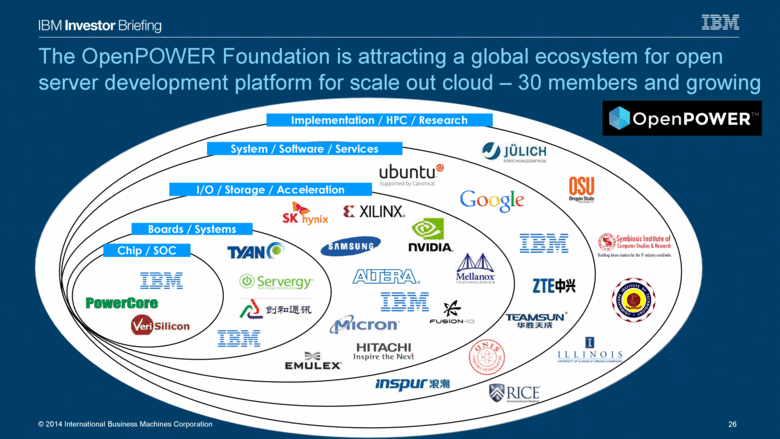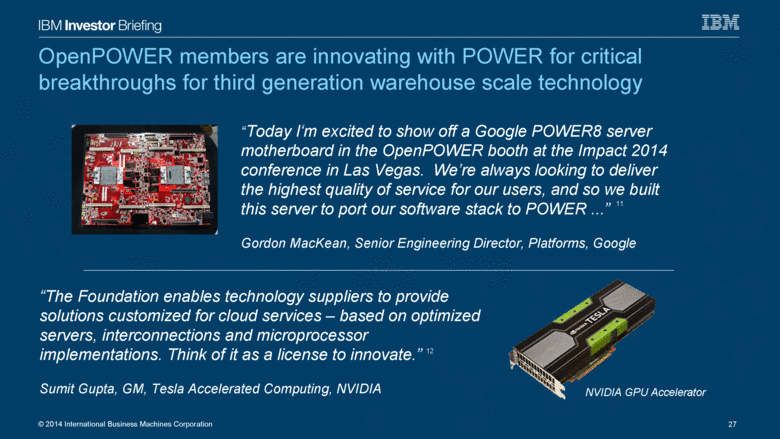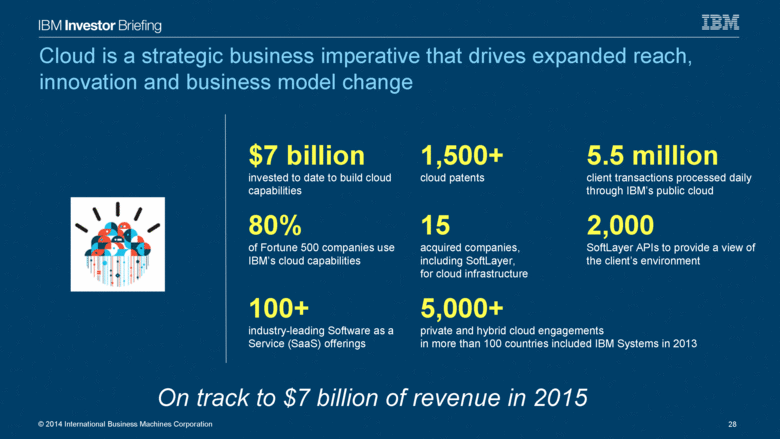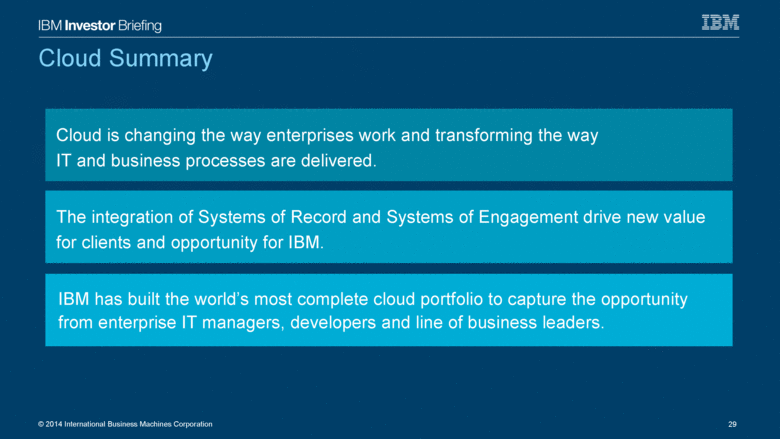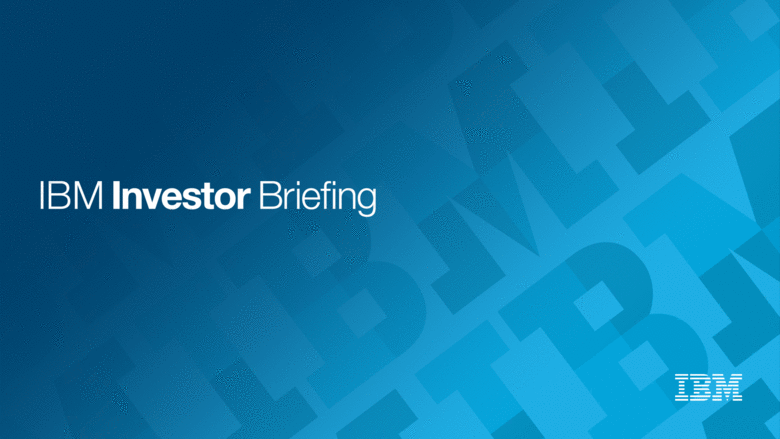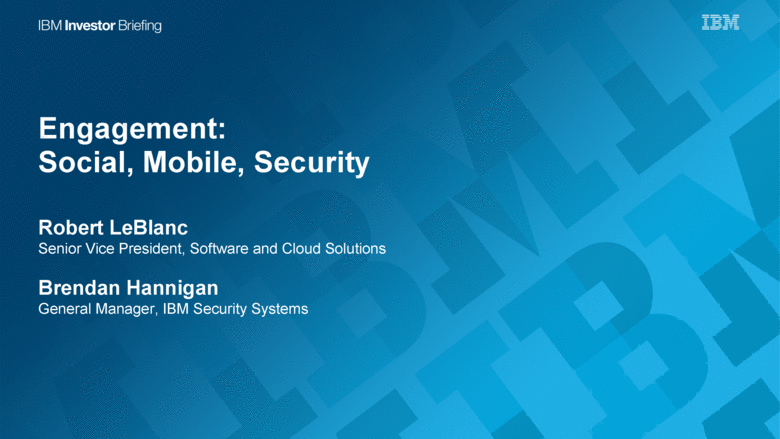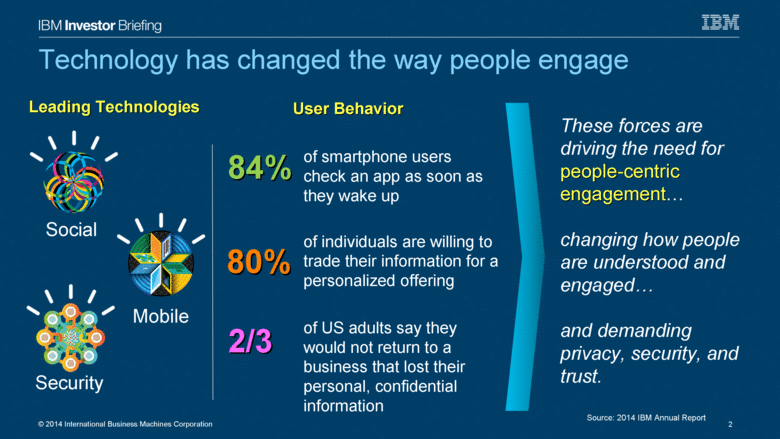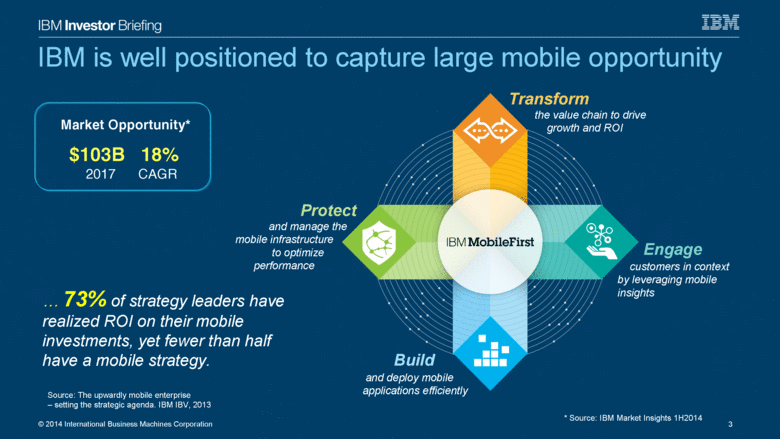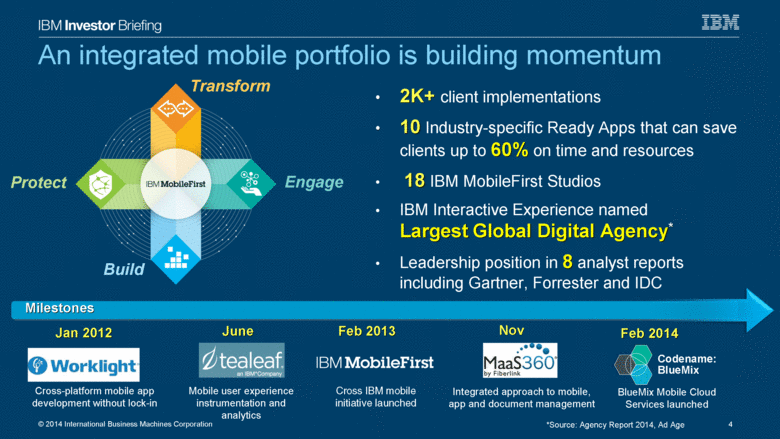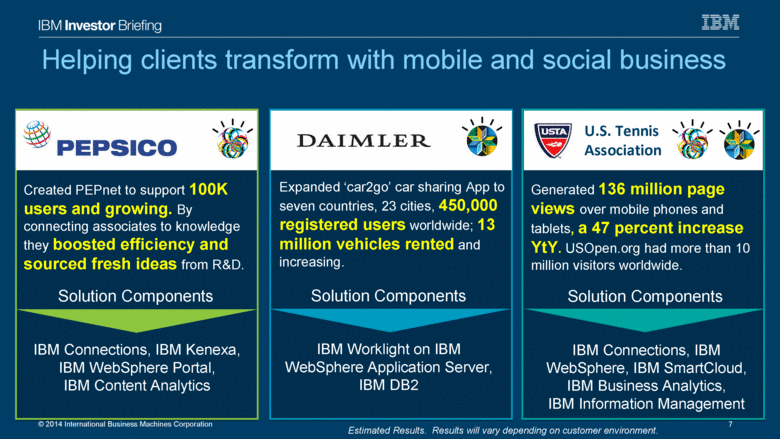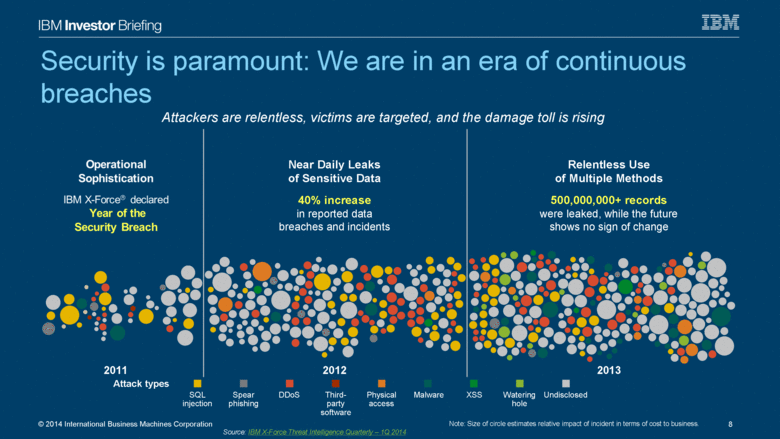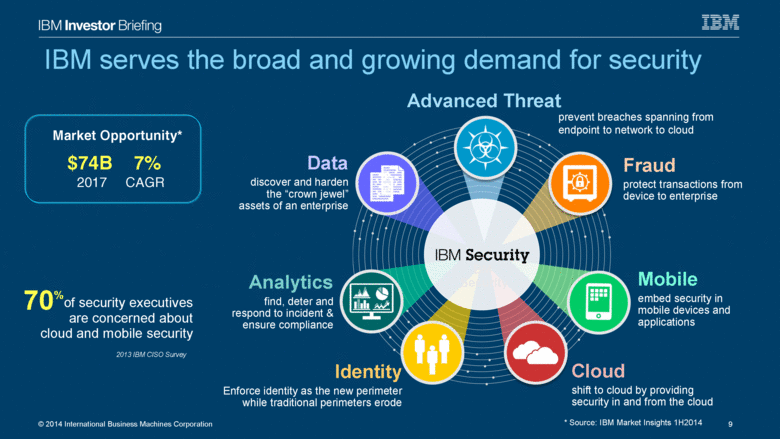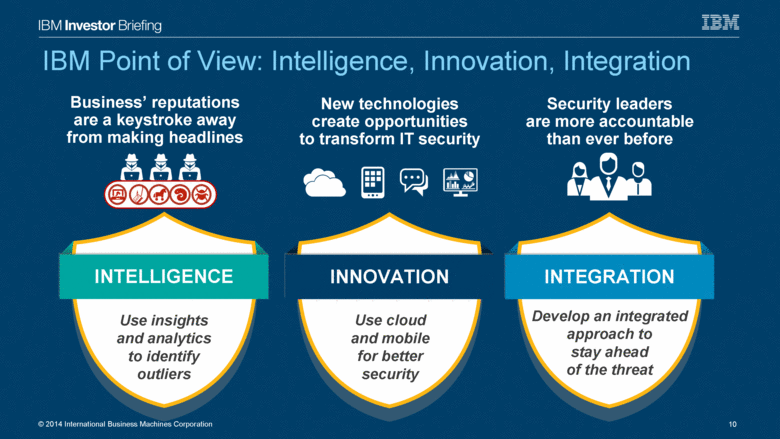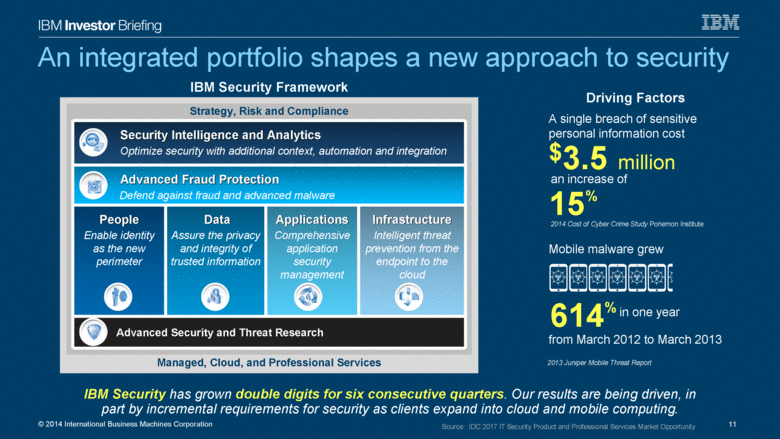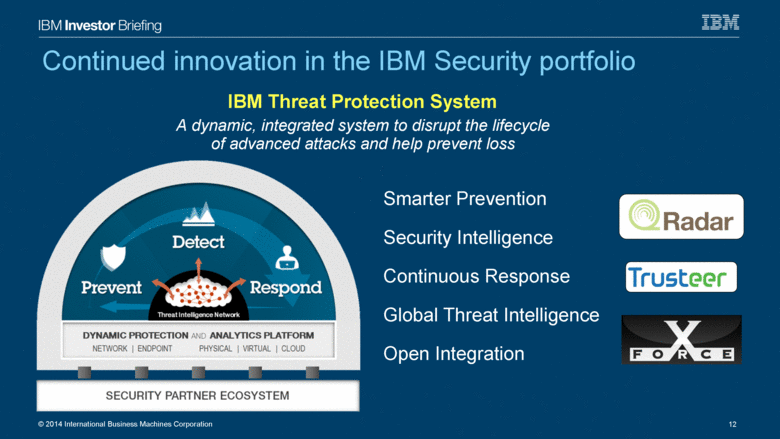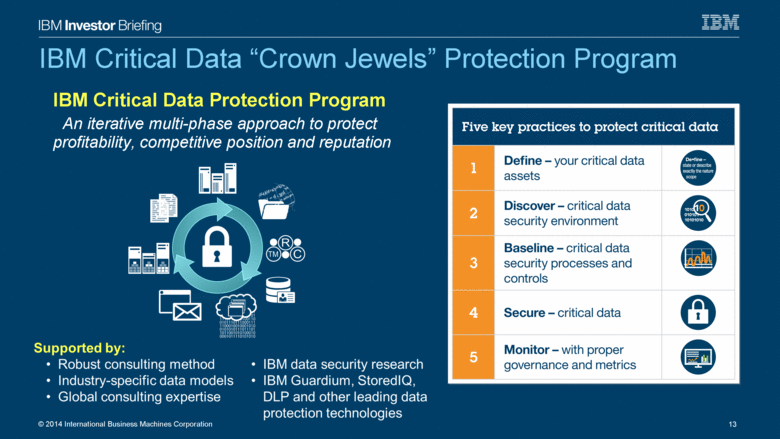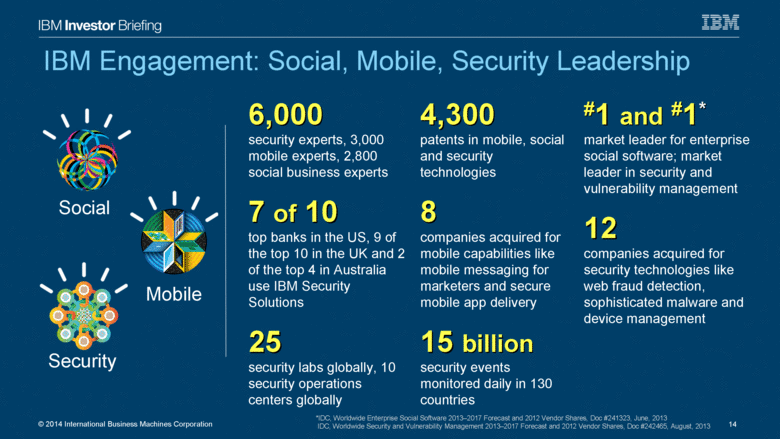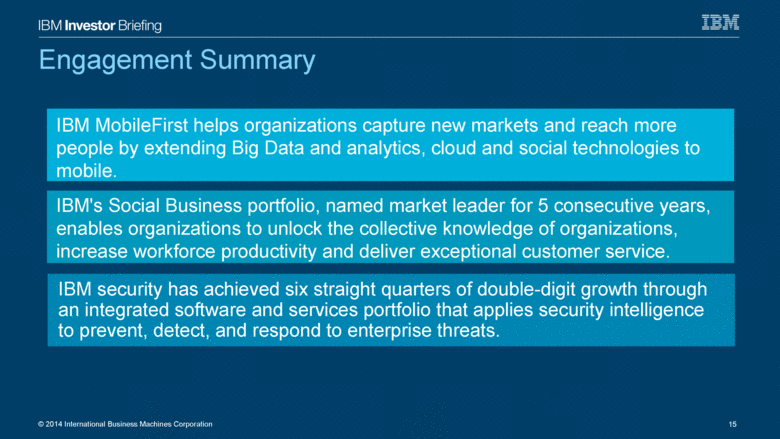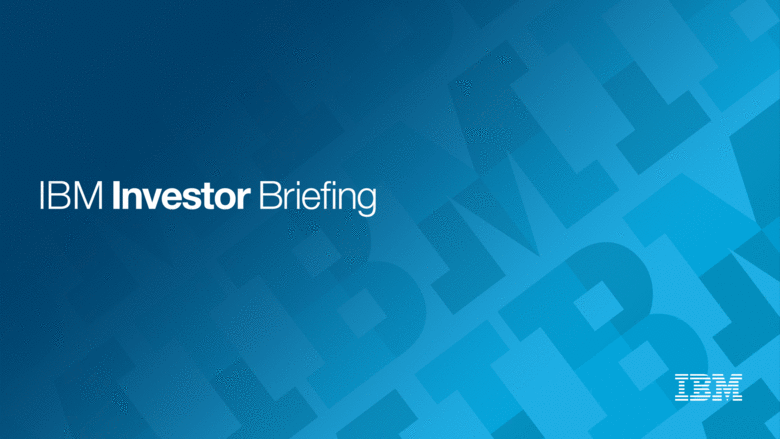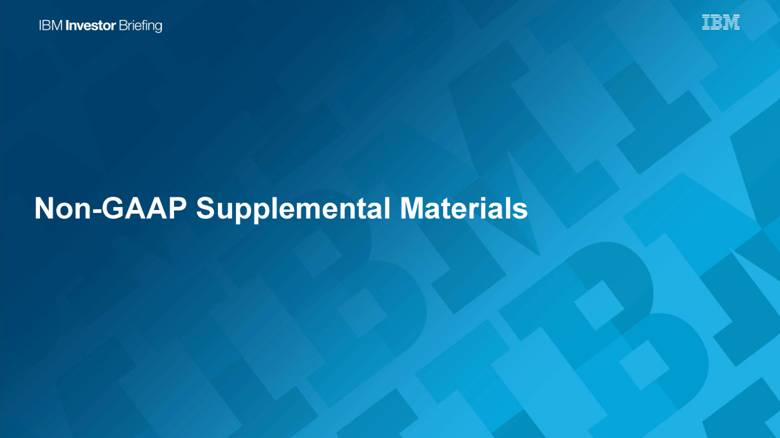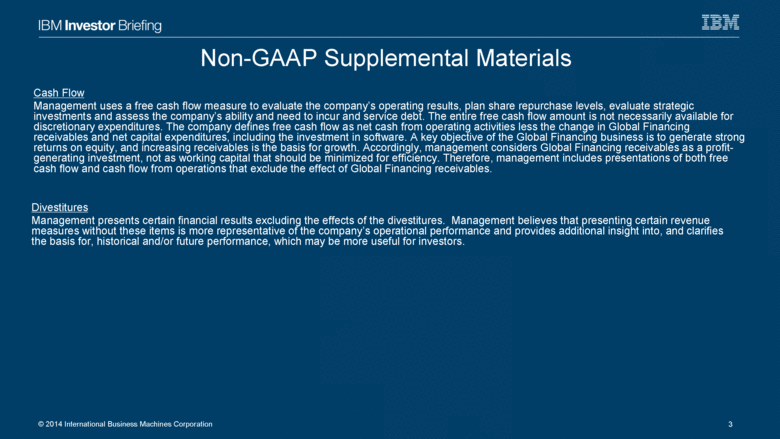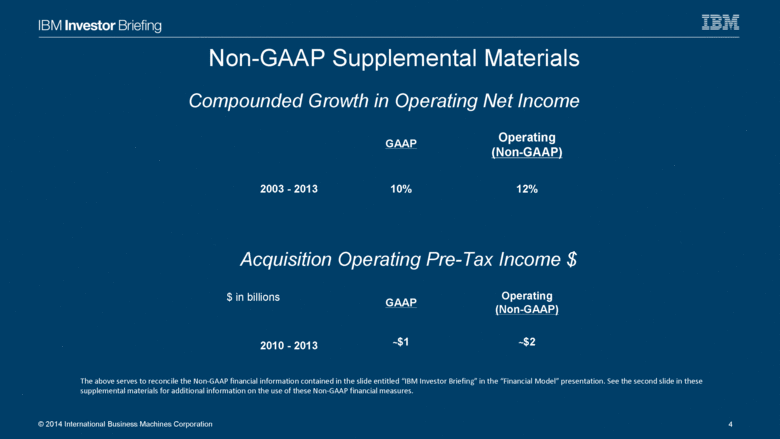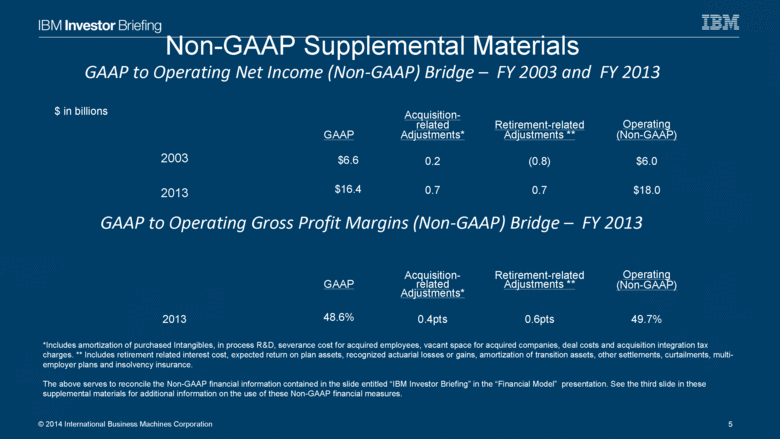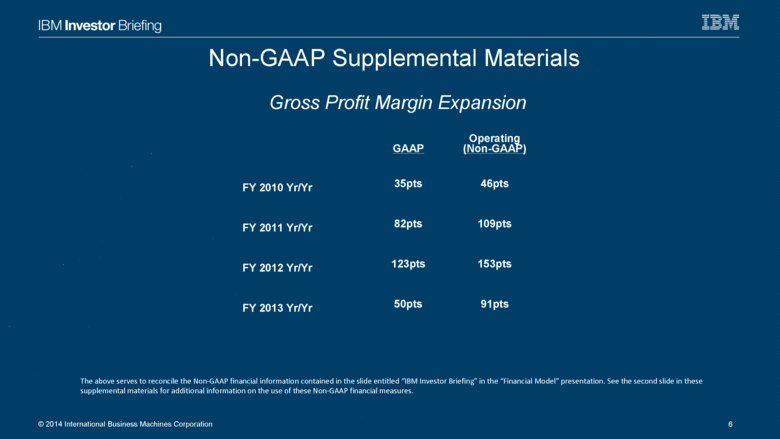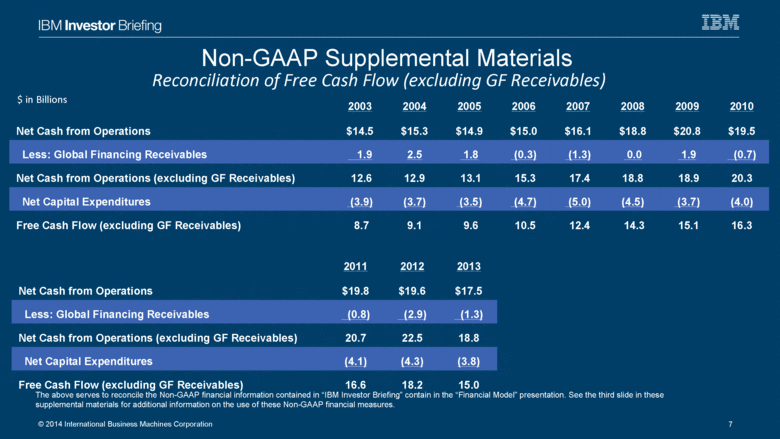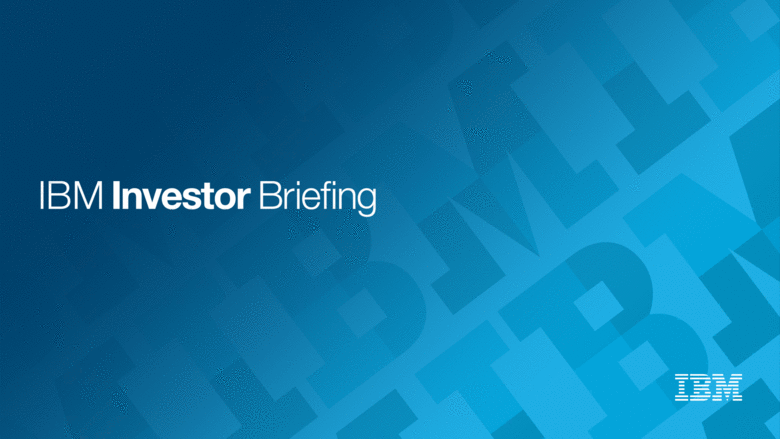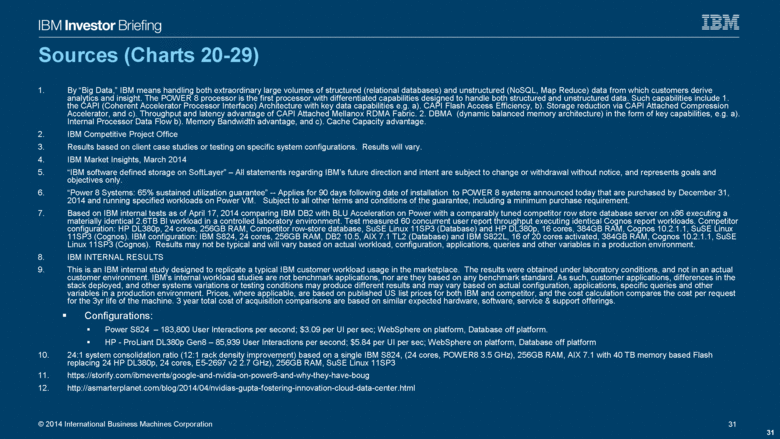
| By “Big Data,” IBM means handling both extraordinary large volumes of structured (relational databases) and unstructured (NoSQL, Map Reduce) data from which customers derive analytics and insight. The POWER 8 processor is the first processor with differentiated capabilities designed to handle both structured and unstructured data. Such capabilities include 1. the CAPI (Coherent Accelerator Processor Interface) Architecture with key data capabilities e.g. a). CAPI Flash Access Efficiency, b). Storage reduction via CAPI Attached Compression Accelerator, and c). Throughput and latency advantage of CAPI Attached Mellanox RDMA Fabric. 2. DBMA (dynamic balanced memory architecture) in the form of key capabilities, e.g. a). Internal Processor Data Flow b). Memory Bandwidth advantage, and c). Cache Capacity advantage. IBM Competitive Project Office Results based on client case studies or testing on specific system configurations. Results will vary. IBM Market Insights, March 2014 “IBM software defined storage on SoftLayer” – All statements regarding IBM’s future direction and intent are subject to change or withdrawal without notice, and represents goals and objectives only. “Power 8 Systems: 65% sustained utilization guarantee” -- Applies for 90 days following date of installation to POWER 8 systems announced today that are purchased by December 31, 2014 and running specified workloads on Power VM. Subject to all other terms and conditions of the guarantee, including a minimum purchase requirement. Based on IBM internal tests as of April 17, 2014 comparing IBM DB2 with BLU Acceleration on Power with a comparably tuned competitor row store database server on x86 executing a materially identical 2.6TB BI workload in a controlled laboratory environment. Test measured 60 concurrent user report throughput executing identical Cognos report workloads. Competitor configuration: HP DL380p, 24 cores, 256GB RAM, Competitor row-store database, SuSE Linux 11SP3 (Database) and HP DL380p, 16 cores, 384GB RAM, Cognos 10.2.1.1, SuSE Linux 11SP3 (Cognos). IBM configuration: IBM S824, 24 cores, 256GB RAM, DB2 10.5, AIX 7.1 TL2 (Database) and IBM S822L, 16 of 20 cores activated, 384GB RAM, Cognos 10.2.1.1, SuSE Linux 11SP3 (Cognos). Results may not be typical and will vary based on actual workload, configuration, applications, queries and other variables in a production environment. IBM INTERNAL RESULTS This is an IBM internal study designed to replicate a typical IBM customer workload usage in the marketplace. The results were obtained under laboratory conditions, and not in an actual customer environment. IBM's internal workload studies are not benchmark applications, nor are they based on any benchmark standard. As such, customer applications, differences in the stack deployed, and other systems variations or testing conditions may produce different results and may vary based on actual configuration, applications, specific queries and other variables in a production environment. Prices, where applicable, are based on published US list prices for both IBM and competitor, and the cost calculation compares the cost per request for the 3yr life of the machine. 3 year total cost of acquisition comparisons are based on similar expected hardware, software, service & support offerings. Configurations: Power S824 – 183,800 User Interactions per second; $3.09 per UI per sec; WebSphere on platform, Database off platform. HP - ProLiant DL380p Gen8 – 85,939 User Interactions per second; $5.84 per UI per sec; WebSphere on platform, Database off platform 24:1 system consolidation ratio (12:1 rack density improvement) based on a single IBM S824, (24 cores, POWER8 3.5 GHz), 256GB RAM, AIX 7.1 with 40 TB memory based Flash replacing 24 HP DL380p, 24 cores, E5-2697 v2 2.7 GHz), 256GB RAM, SuSE Linux 11SP3 https://storify.com/ibmevents/google-and-nvidia-on-power8-and-why-they-have-boug http://asmarterplanet.com/blog/2014/04/nvidias-gupta-fostering-innovation-cloud-data-center.html Sources (Charts 20-29) 31 |
